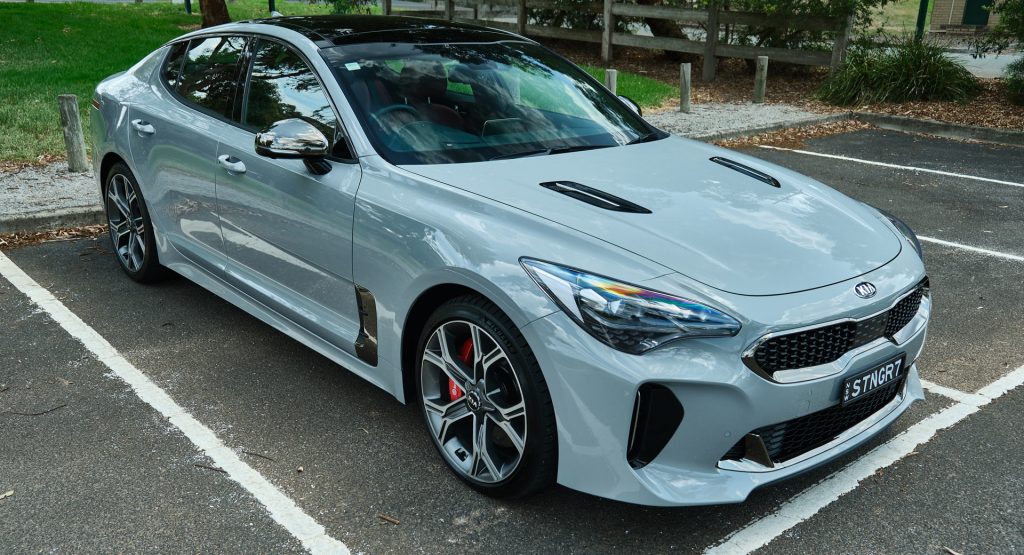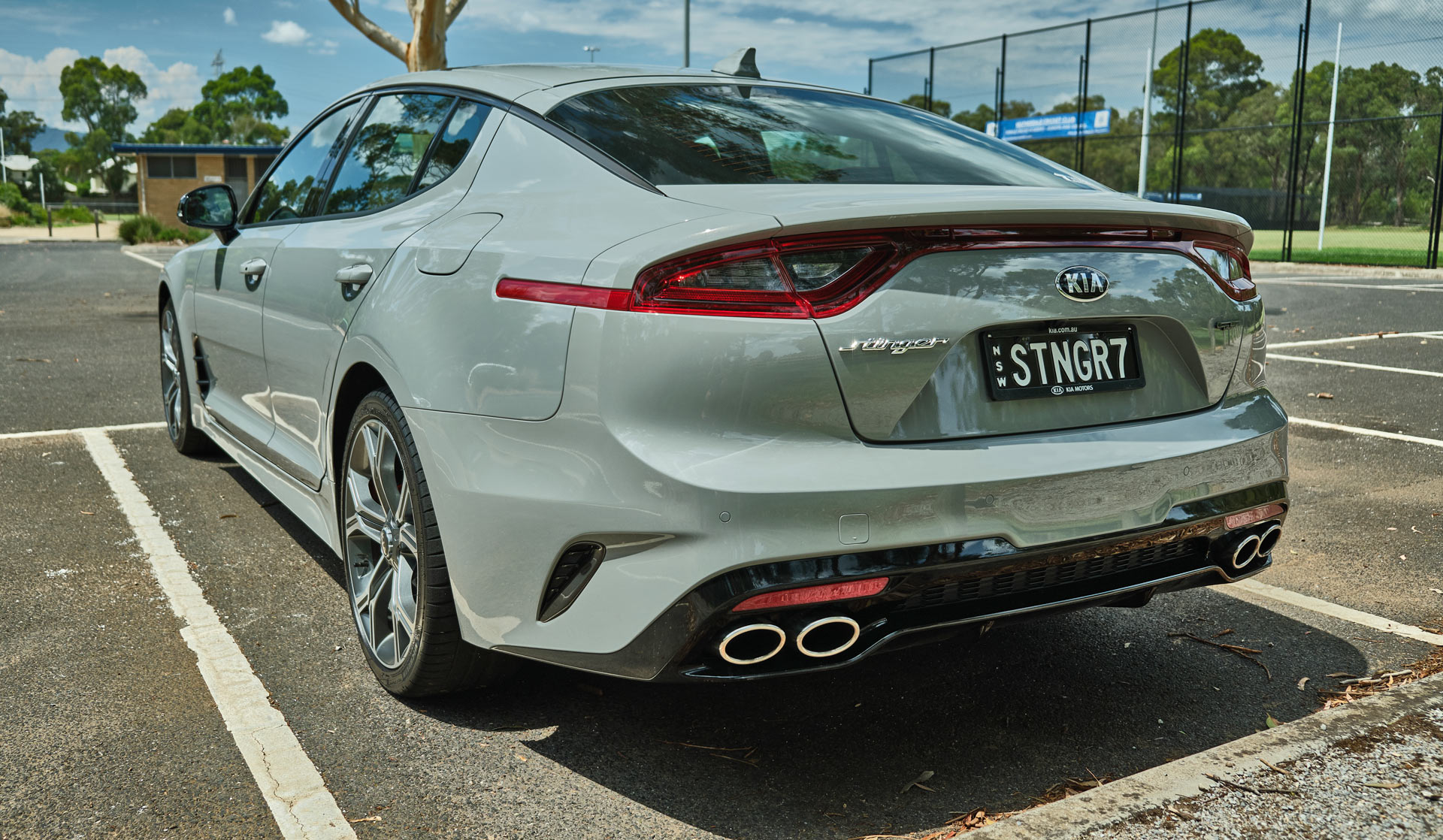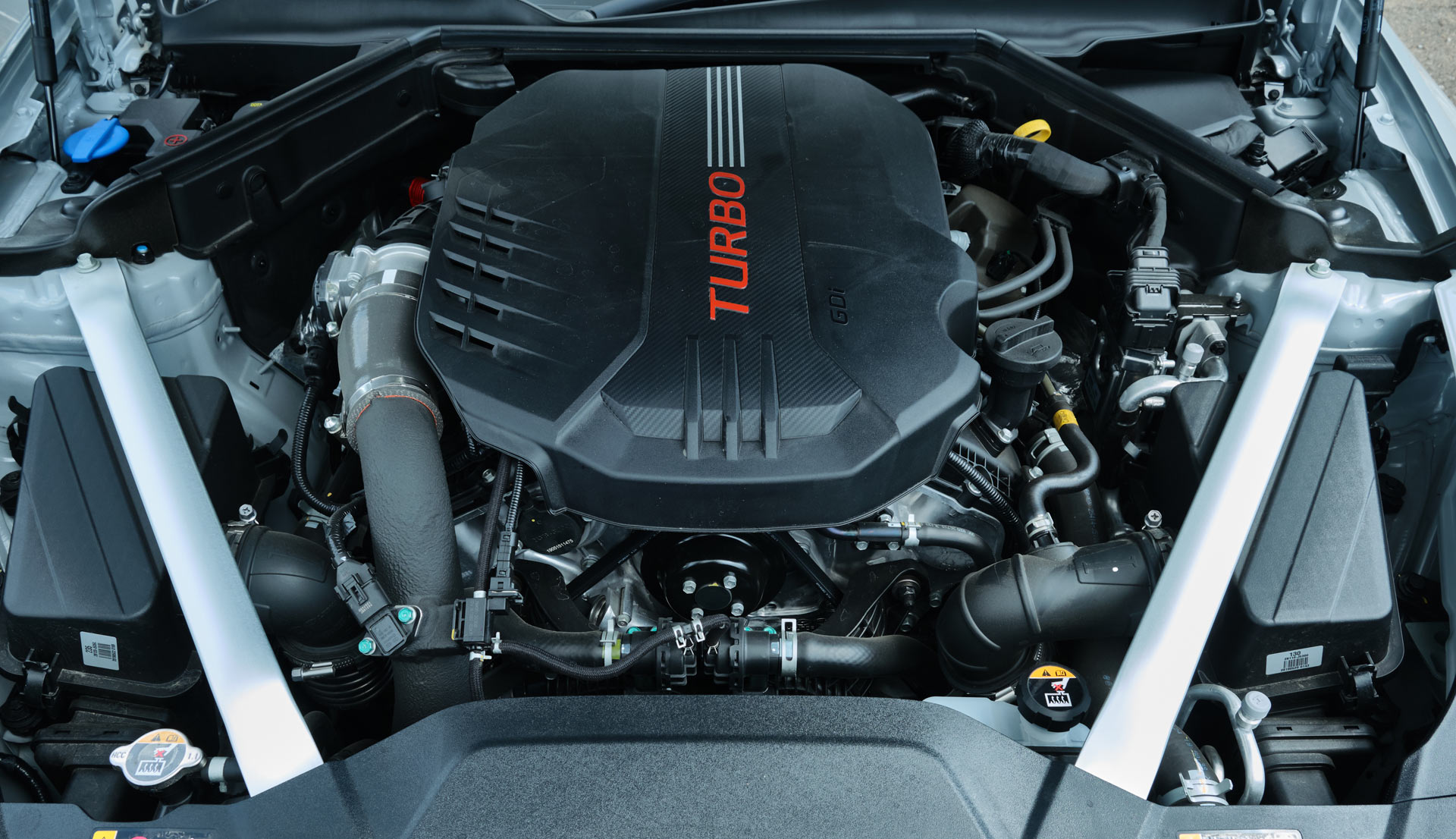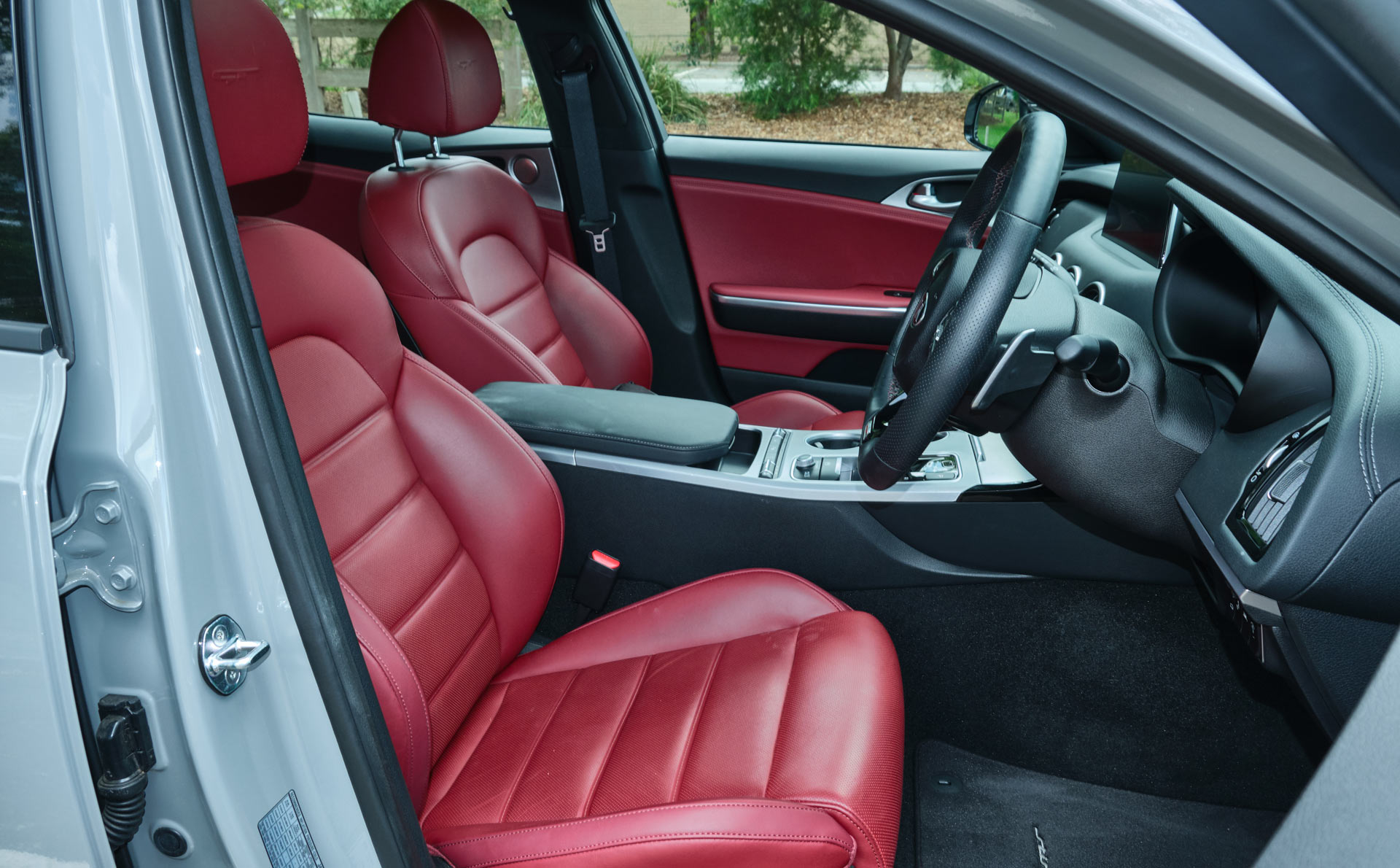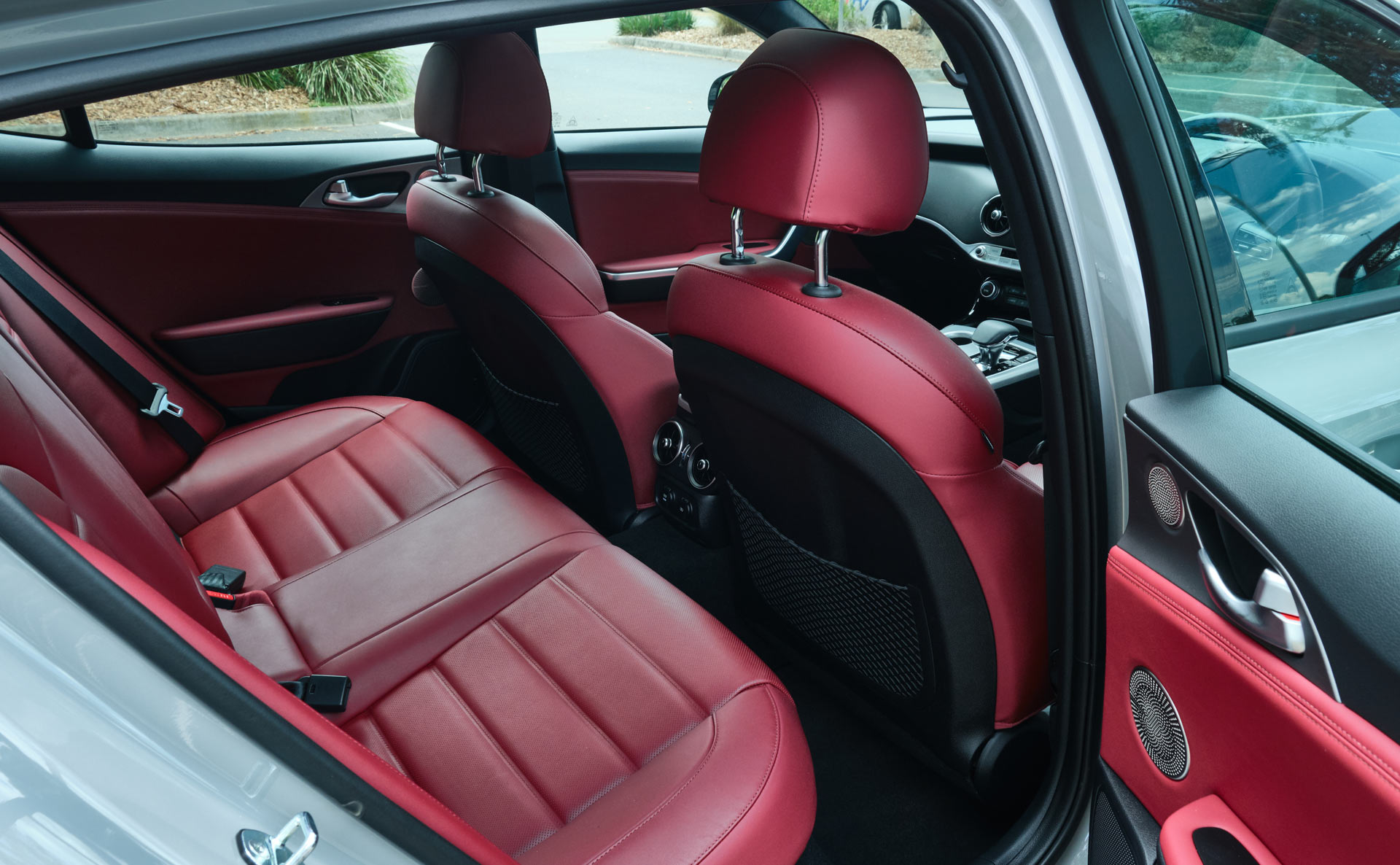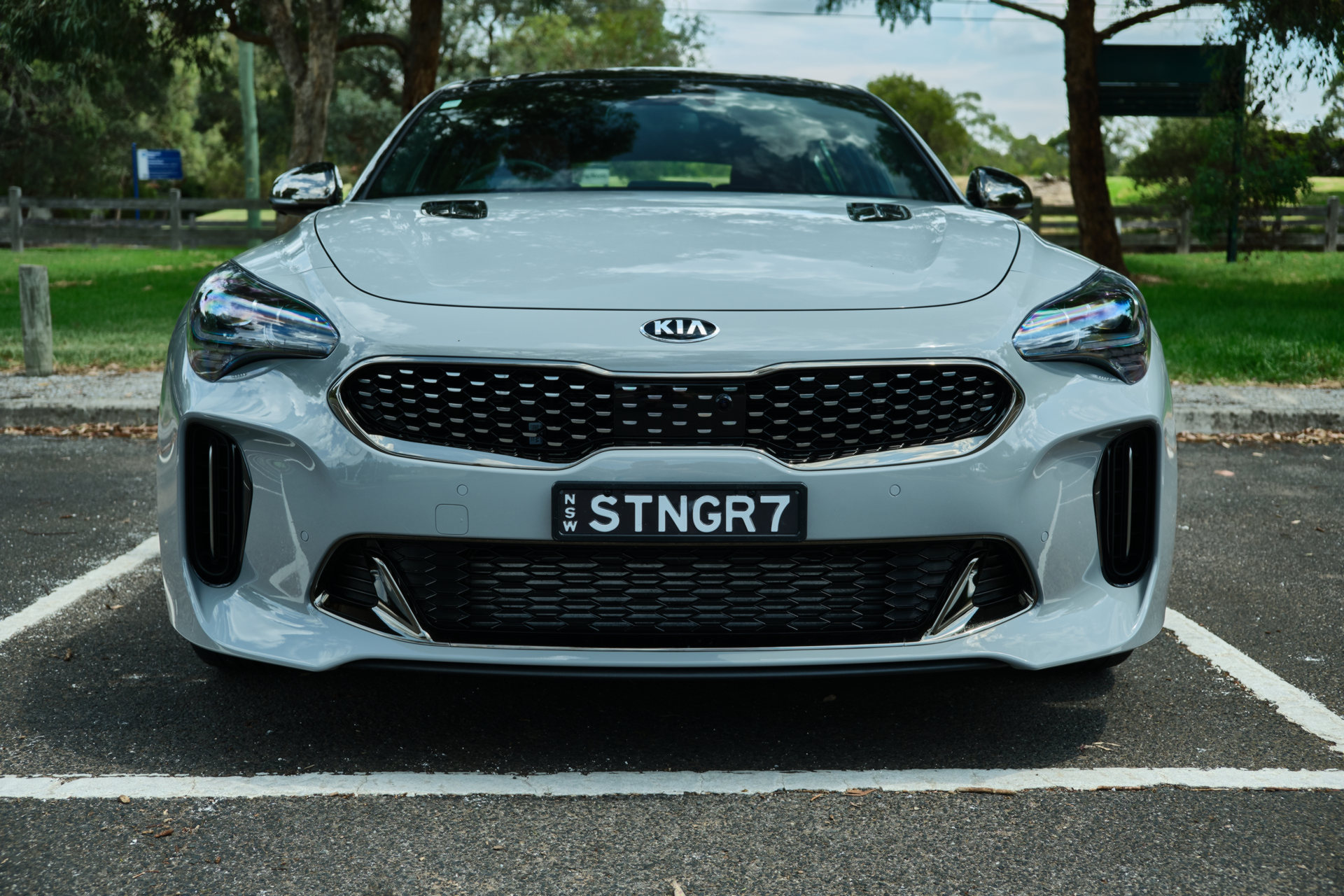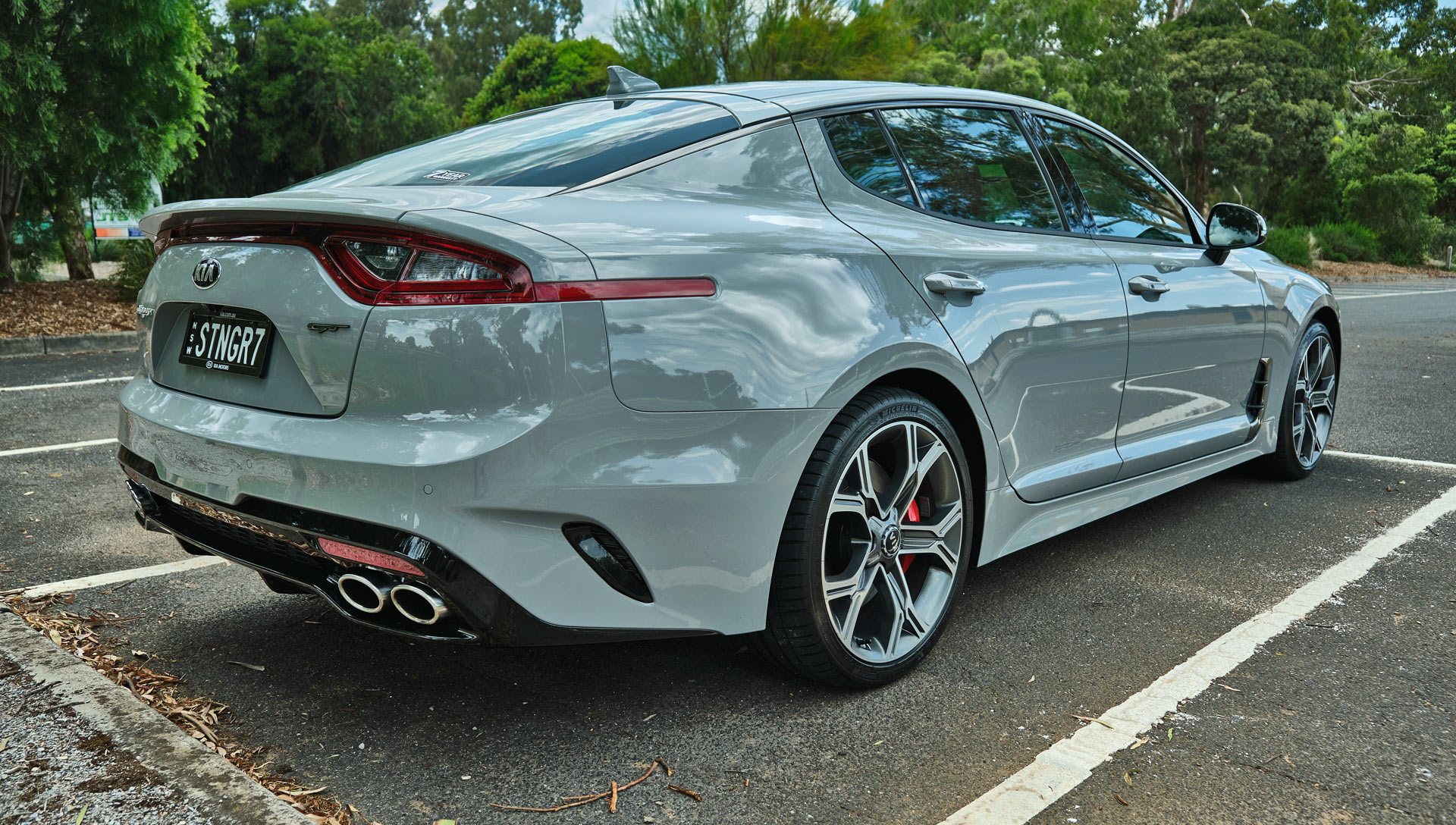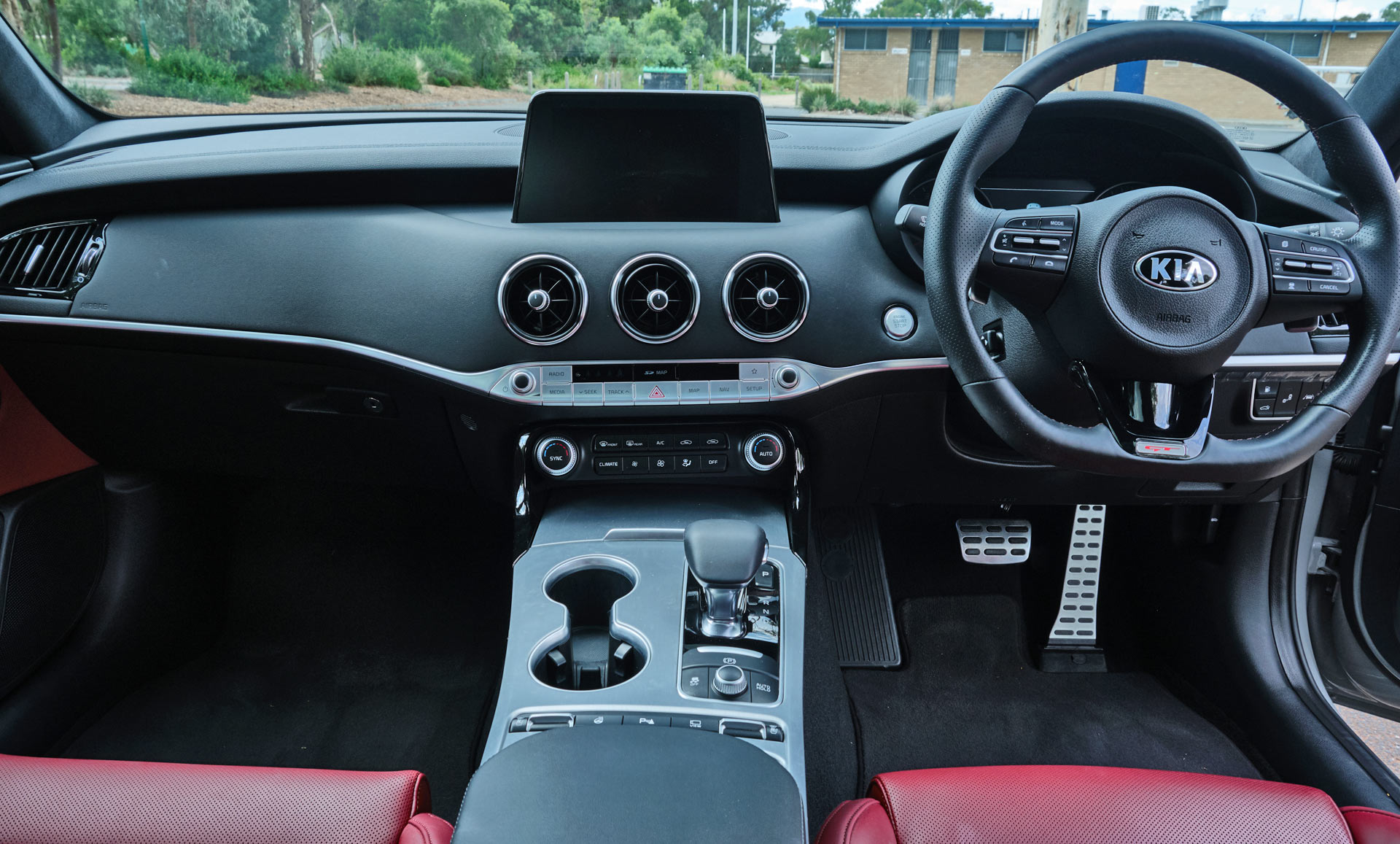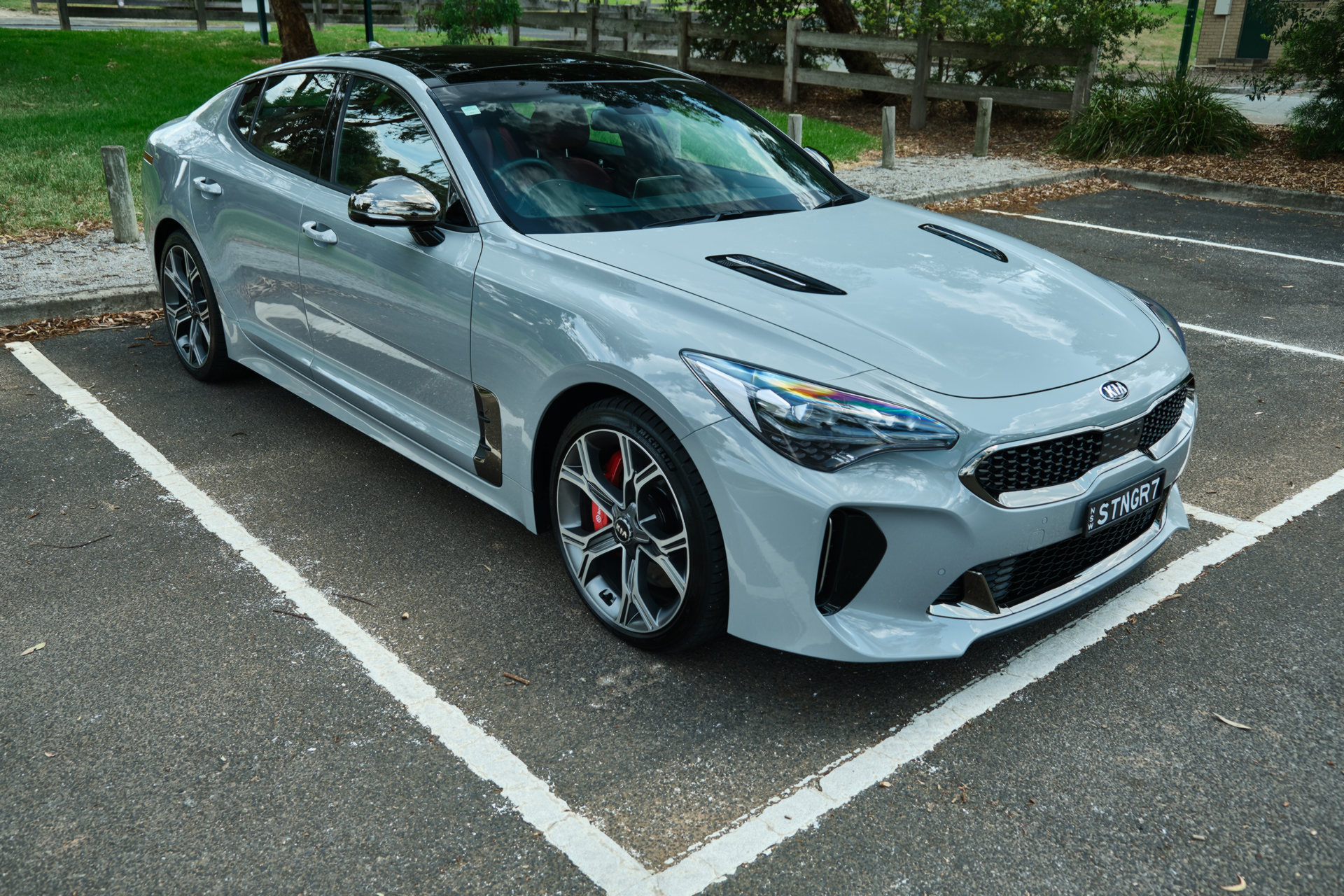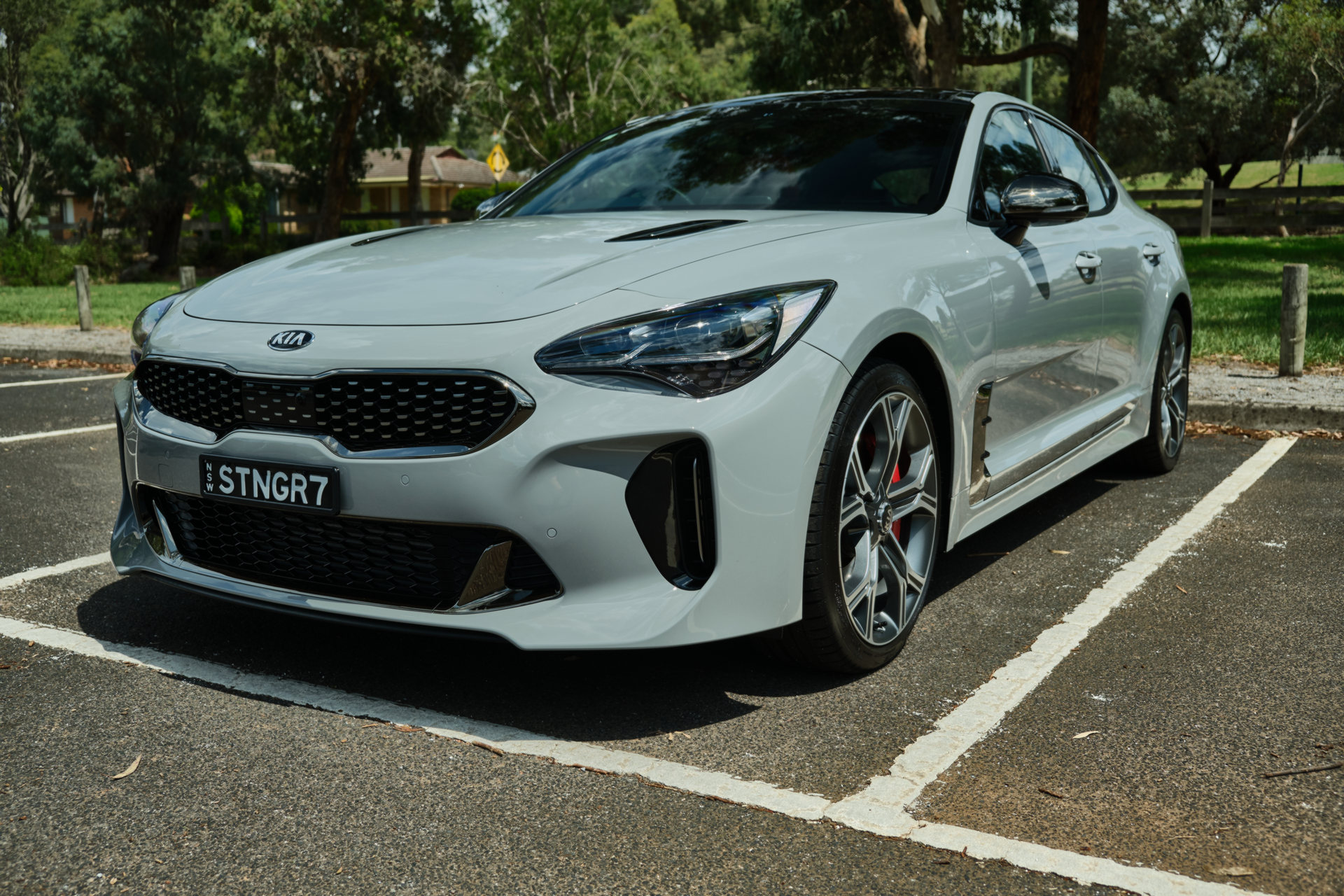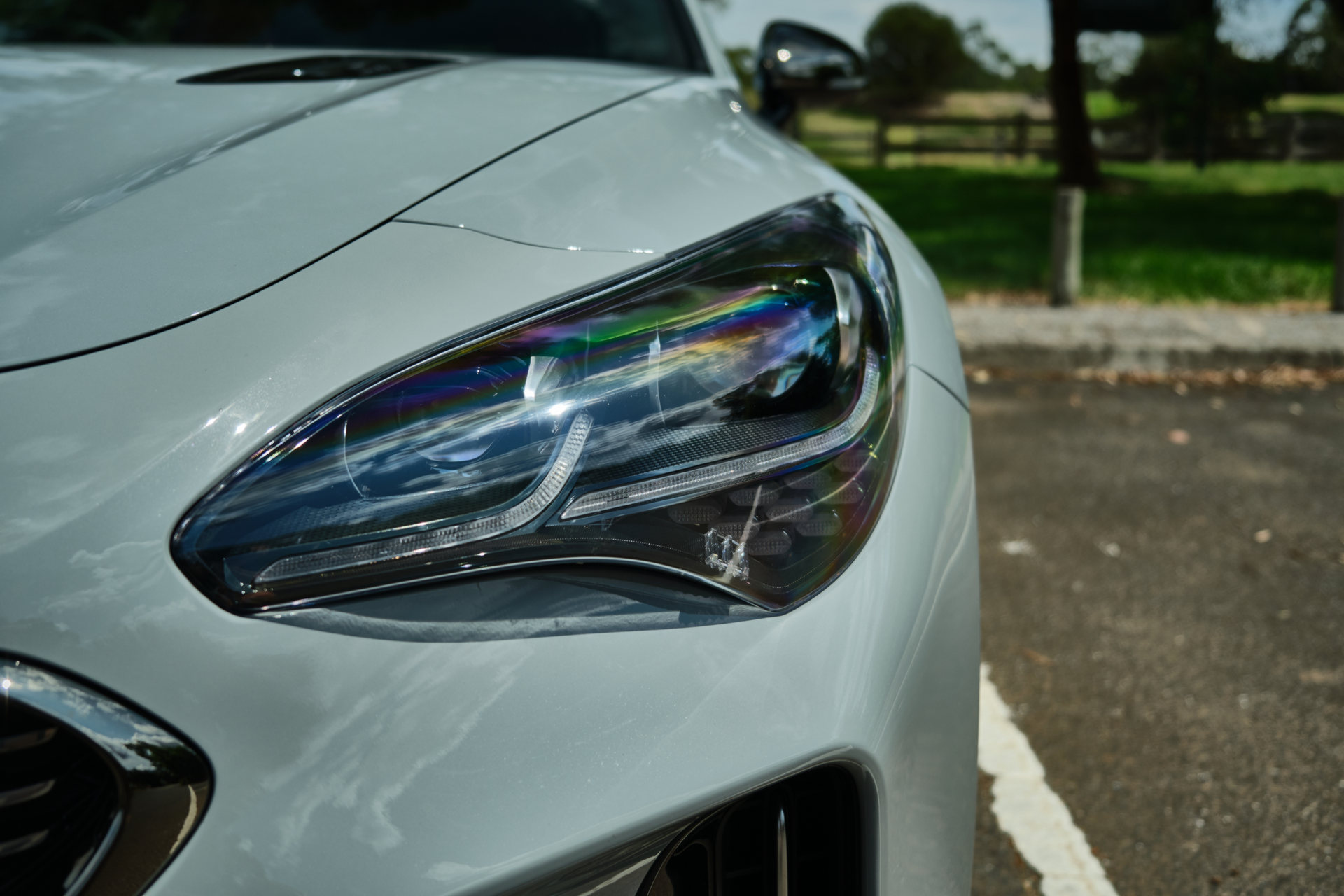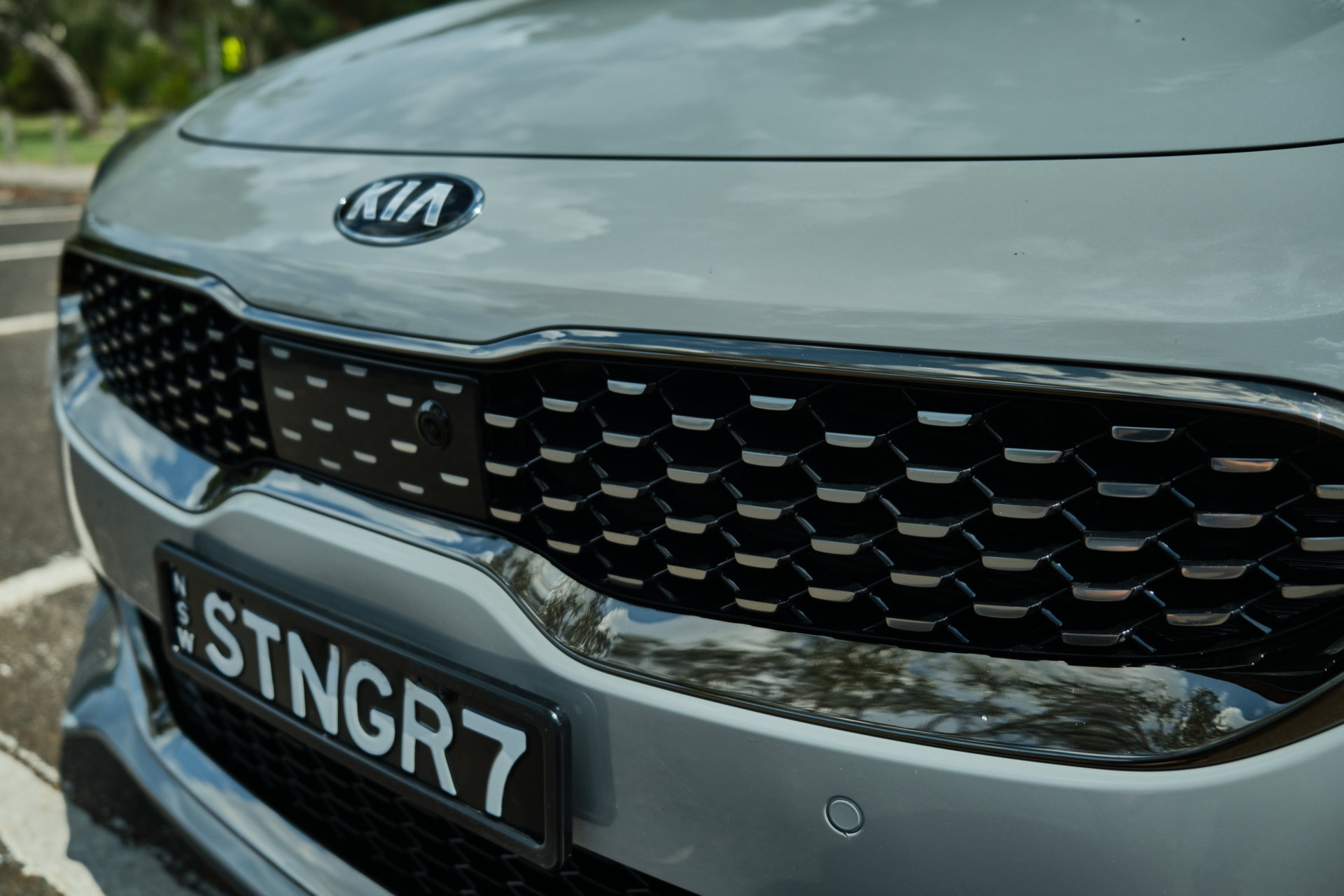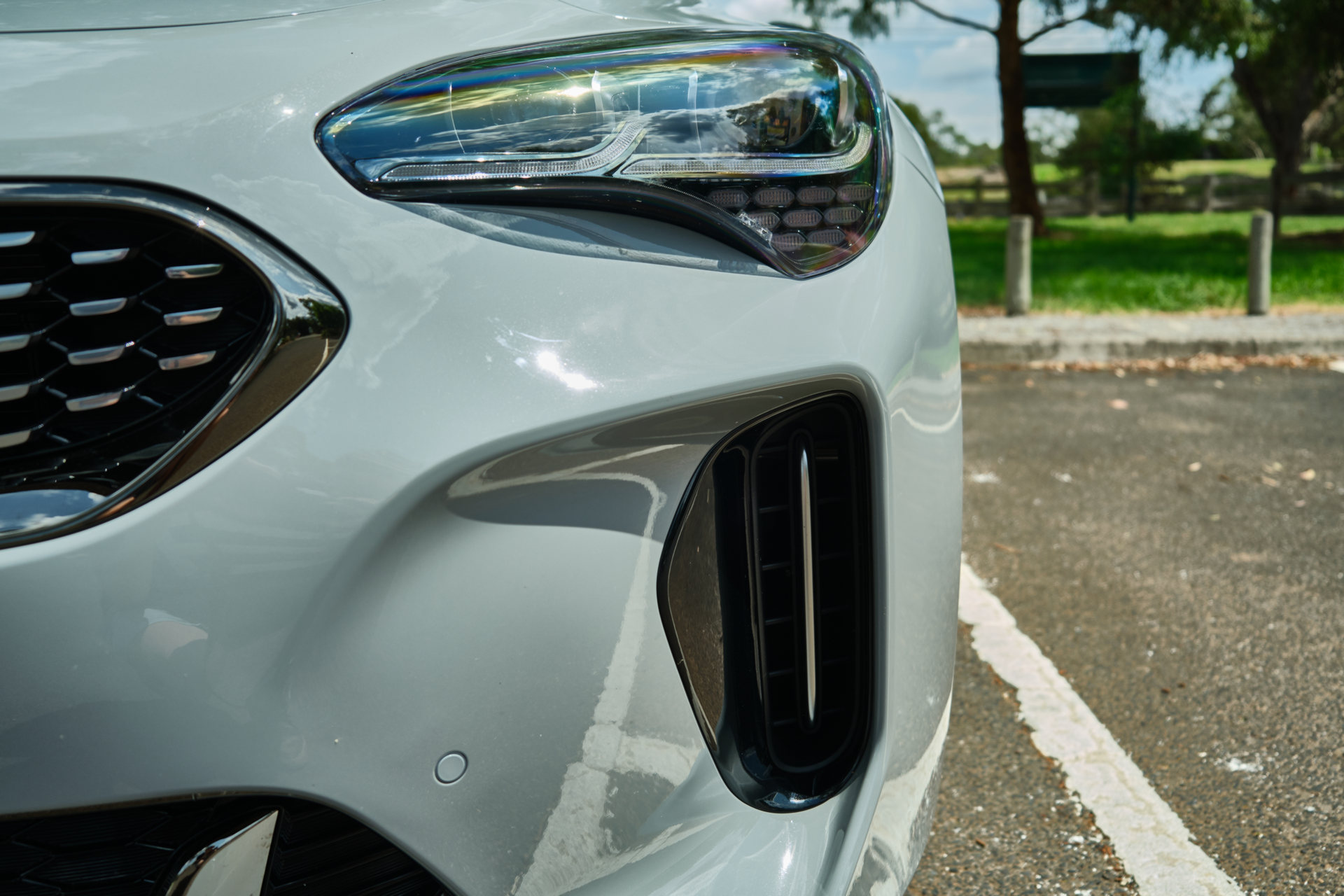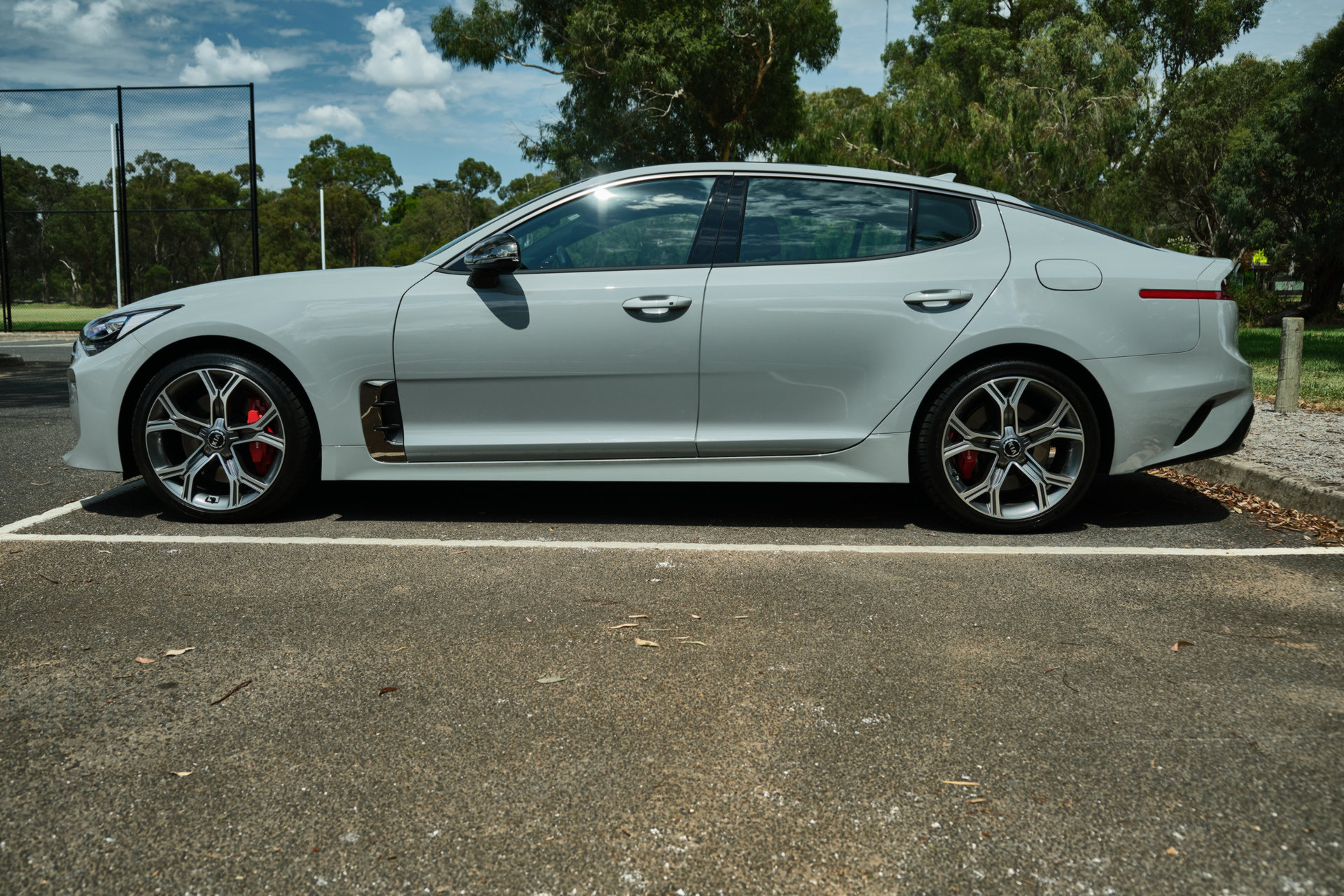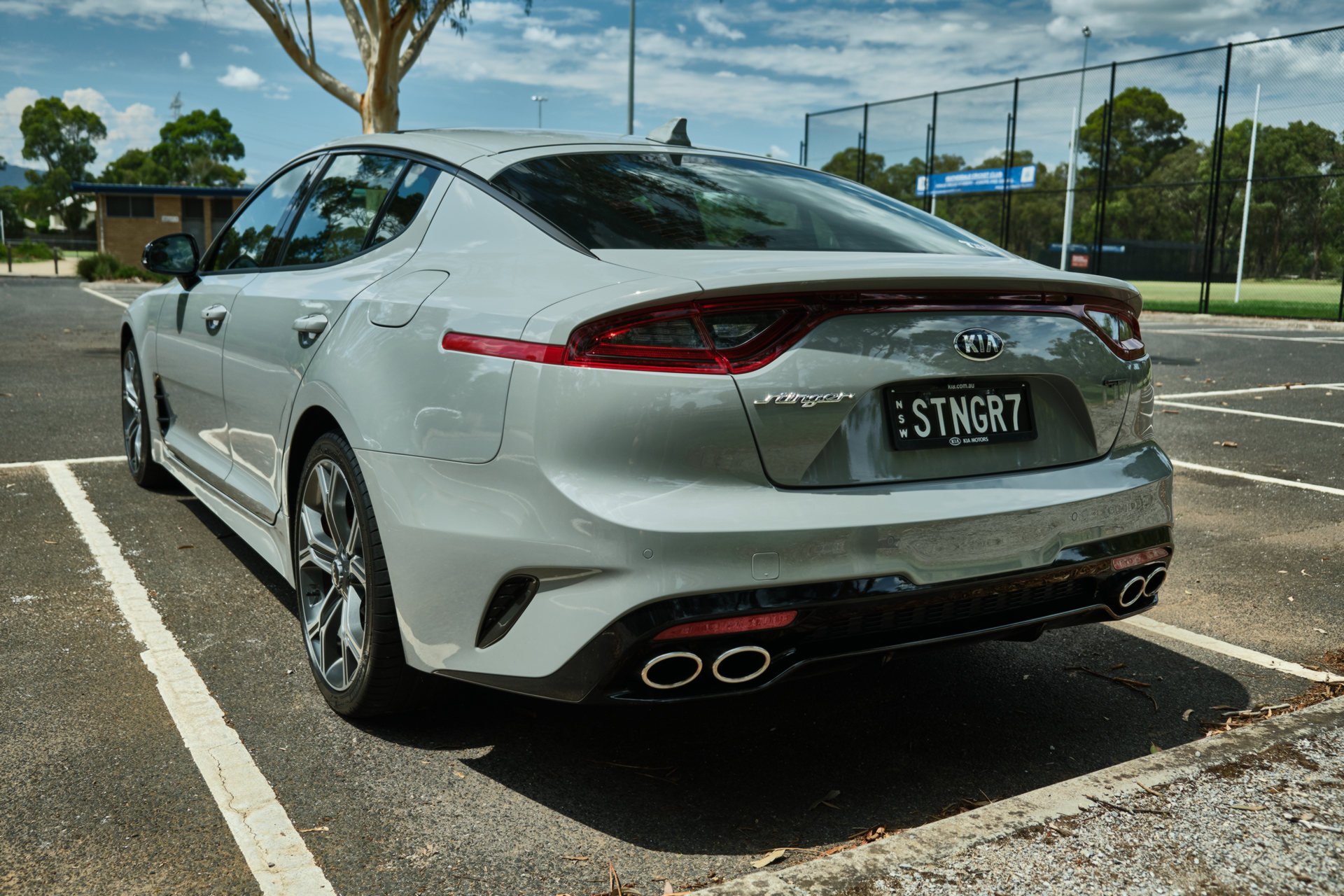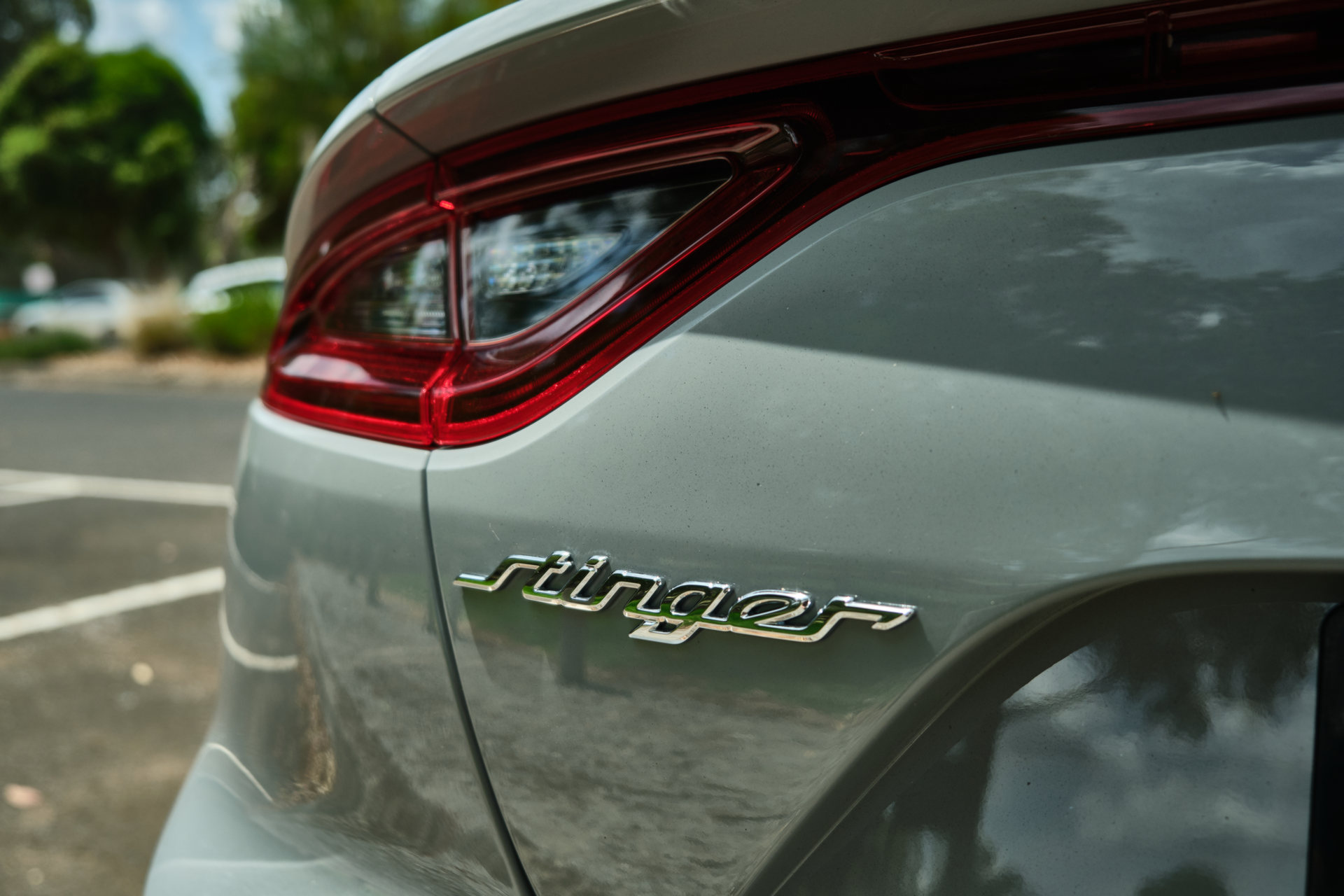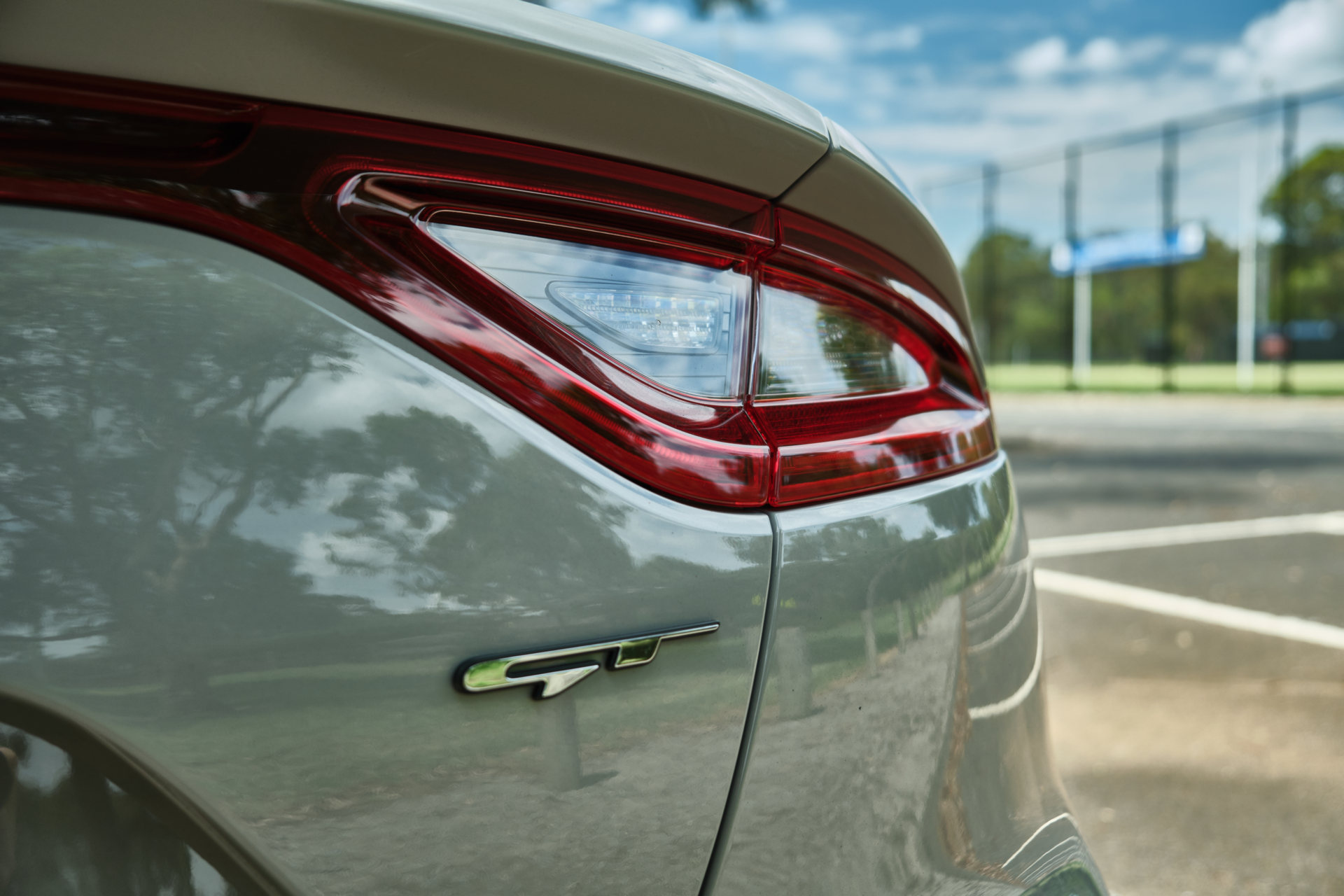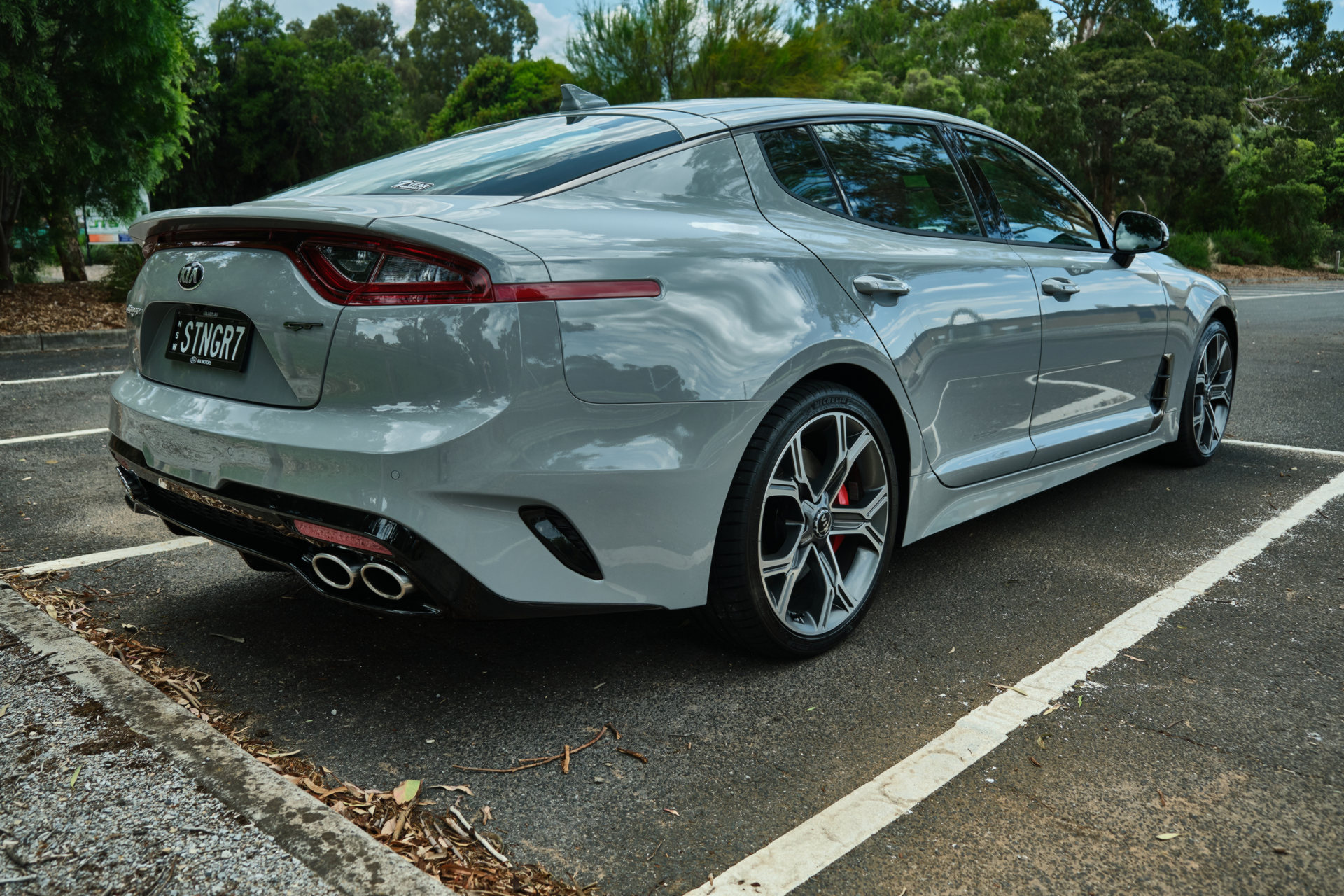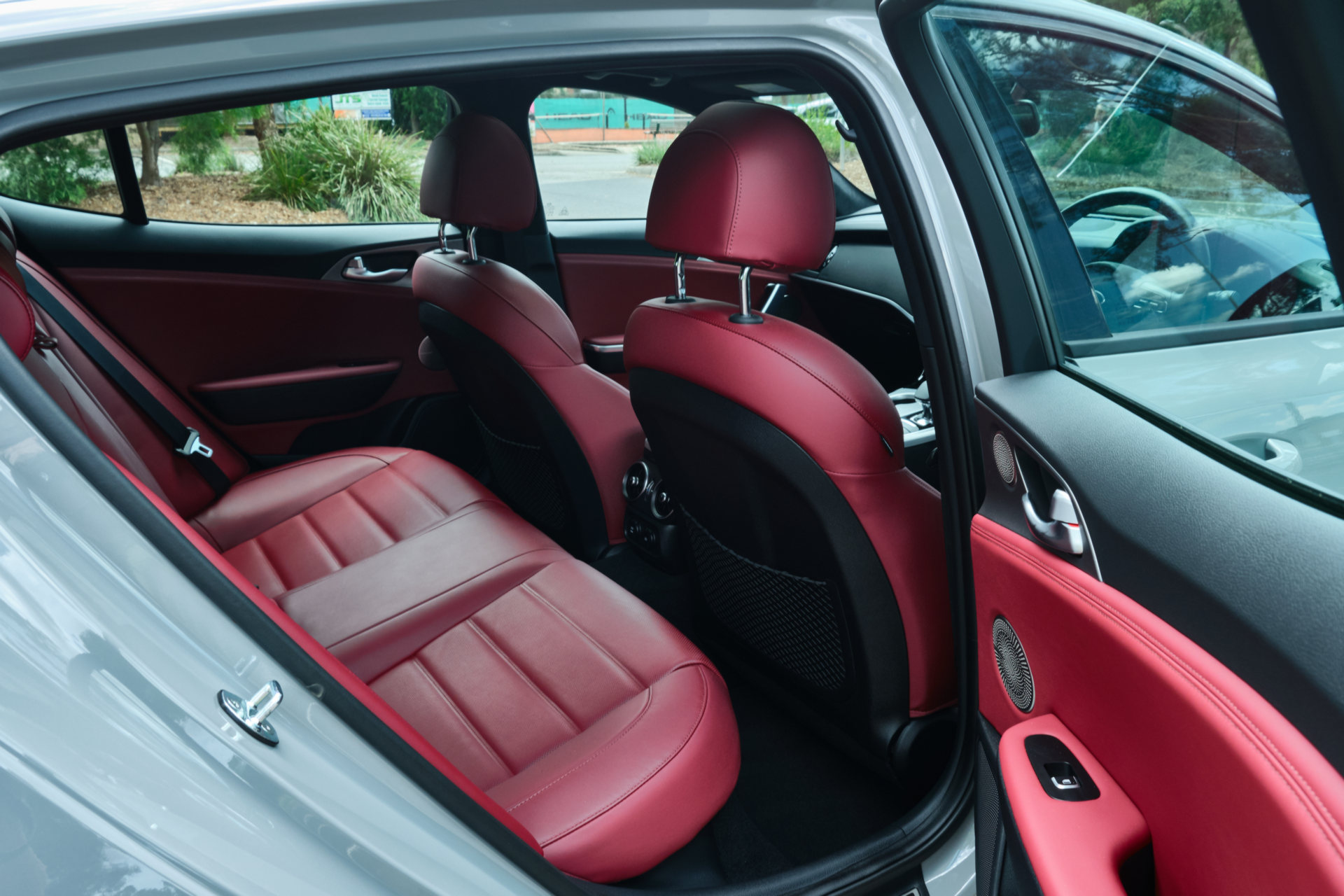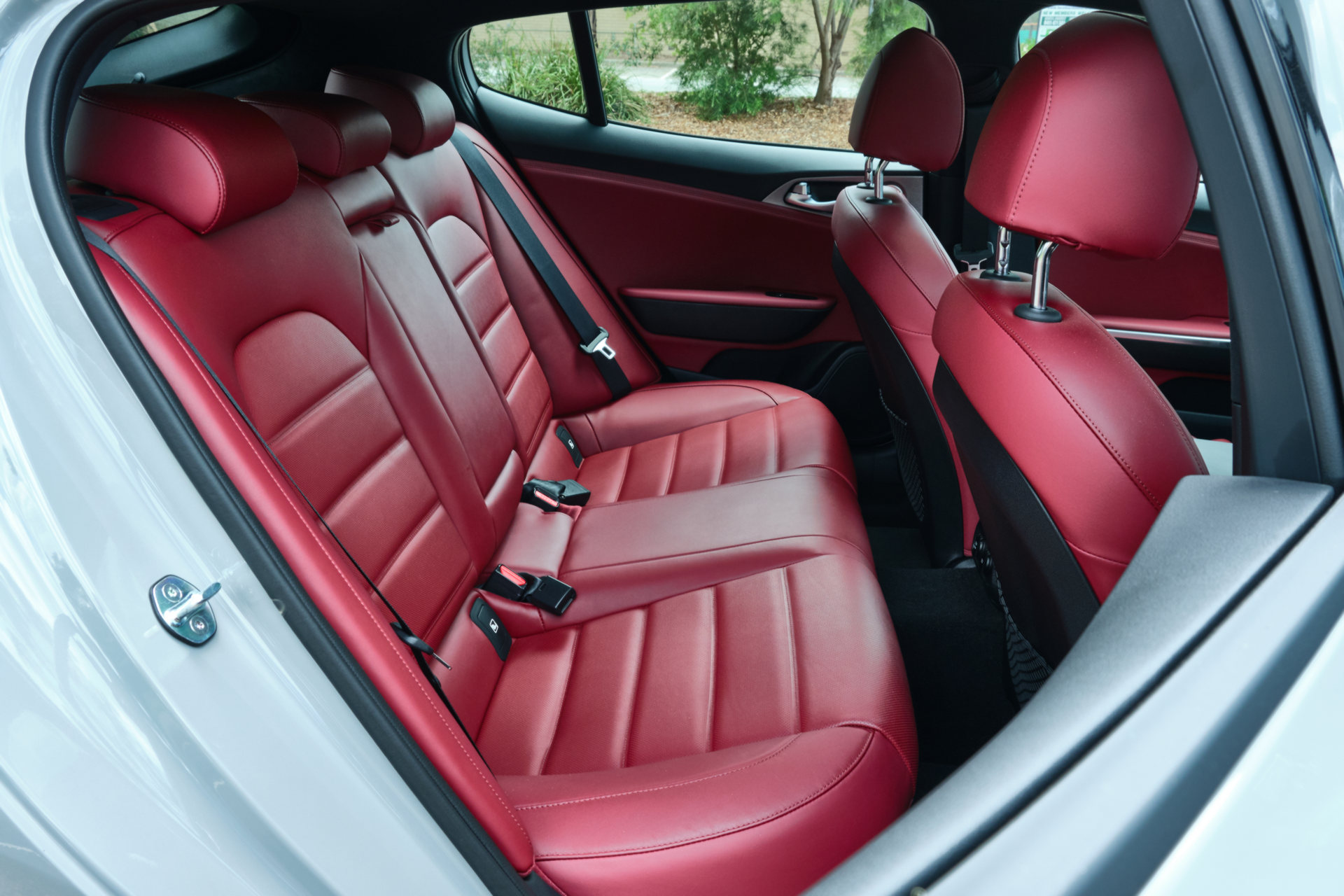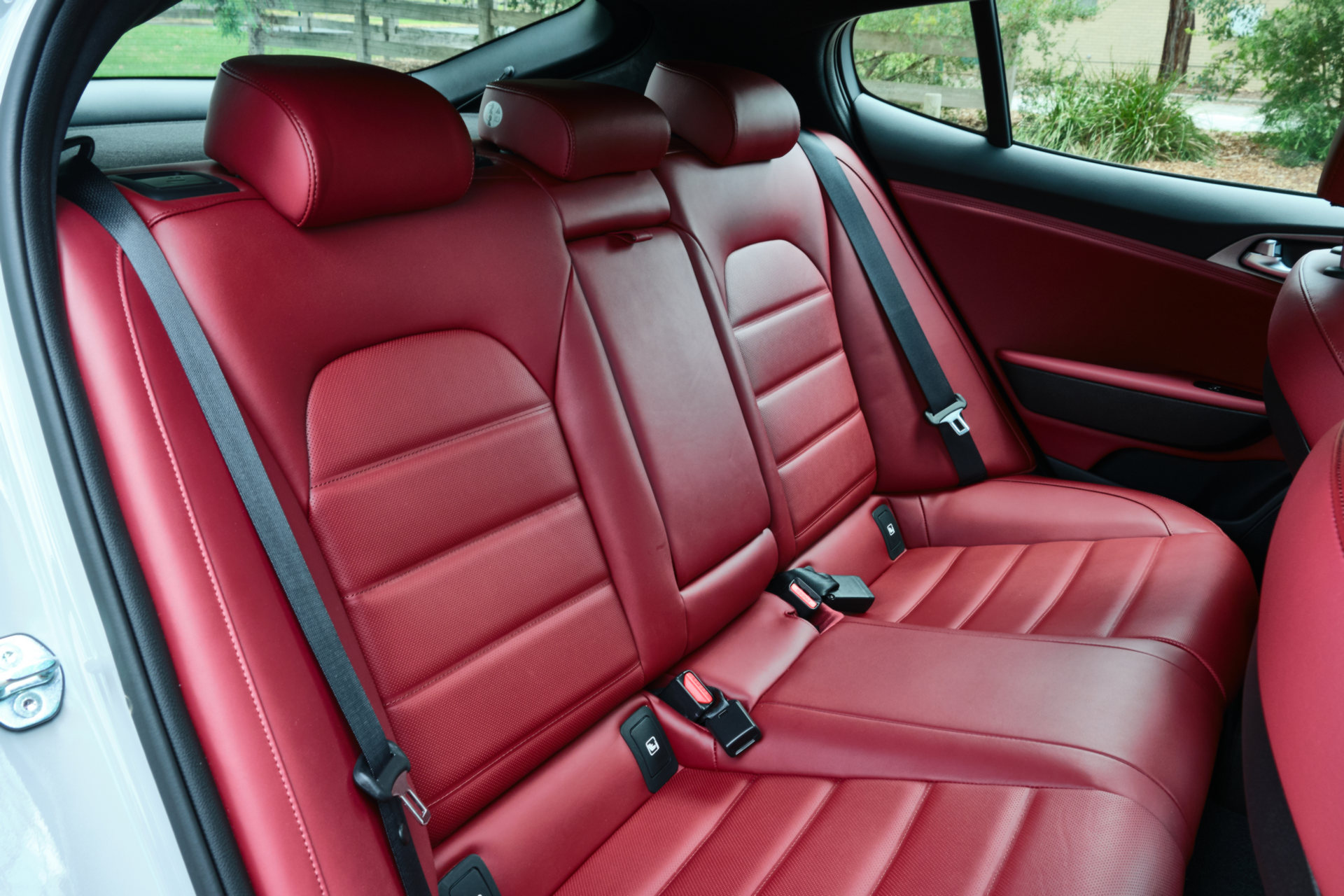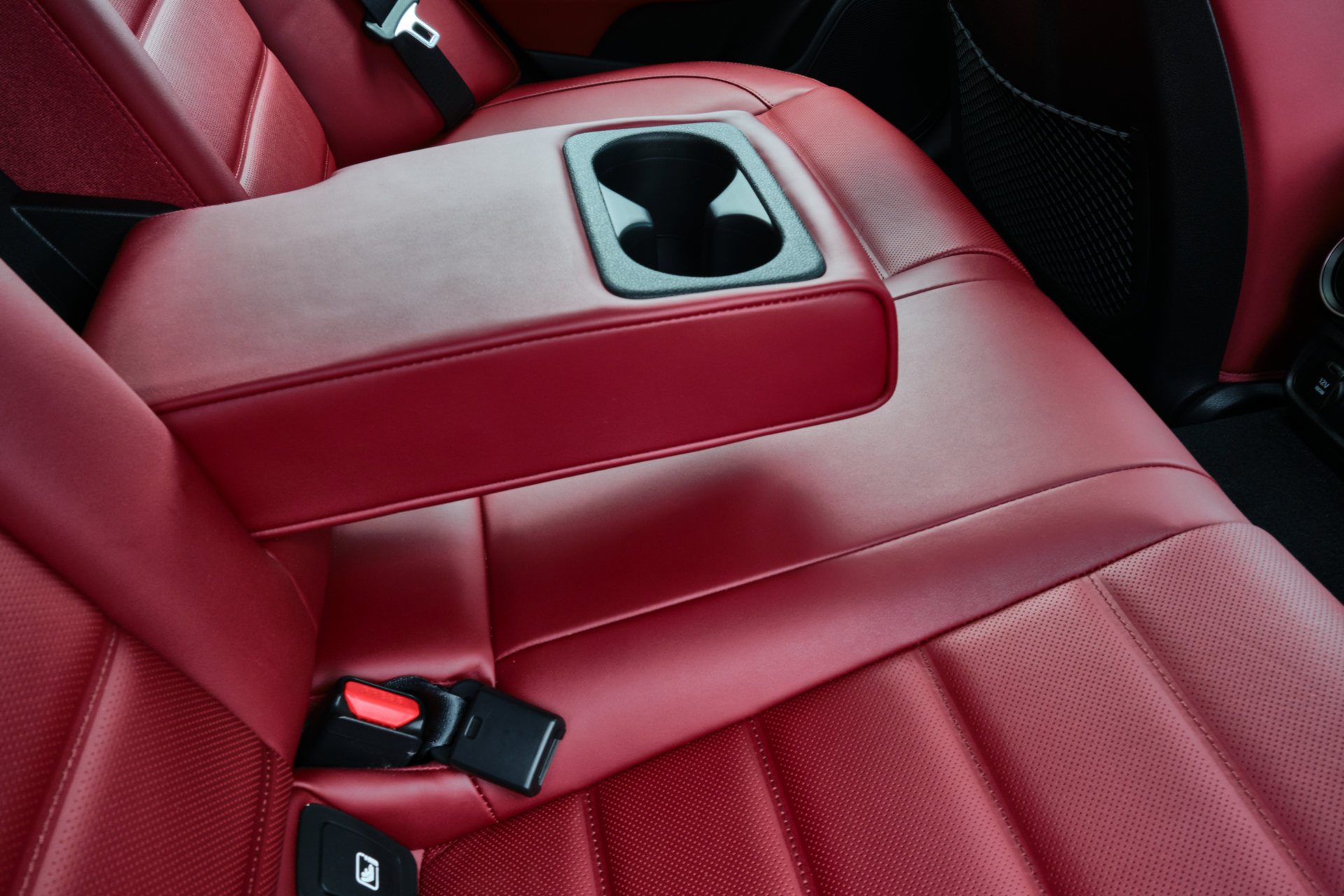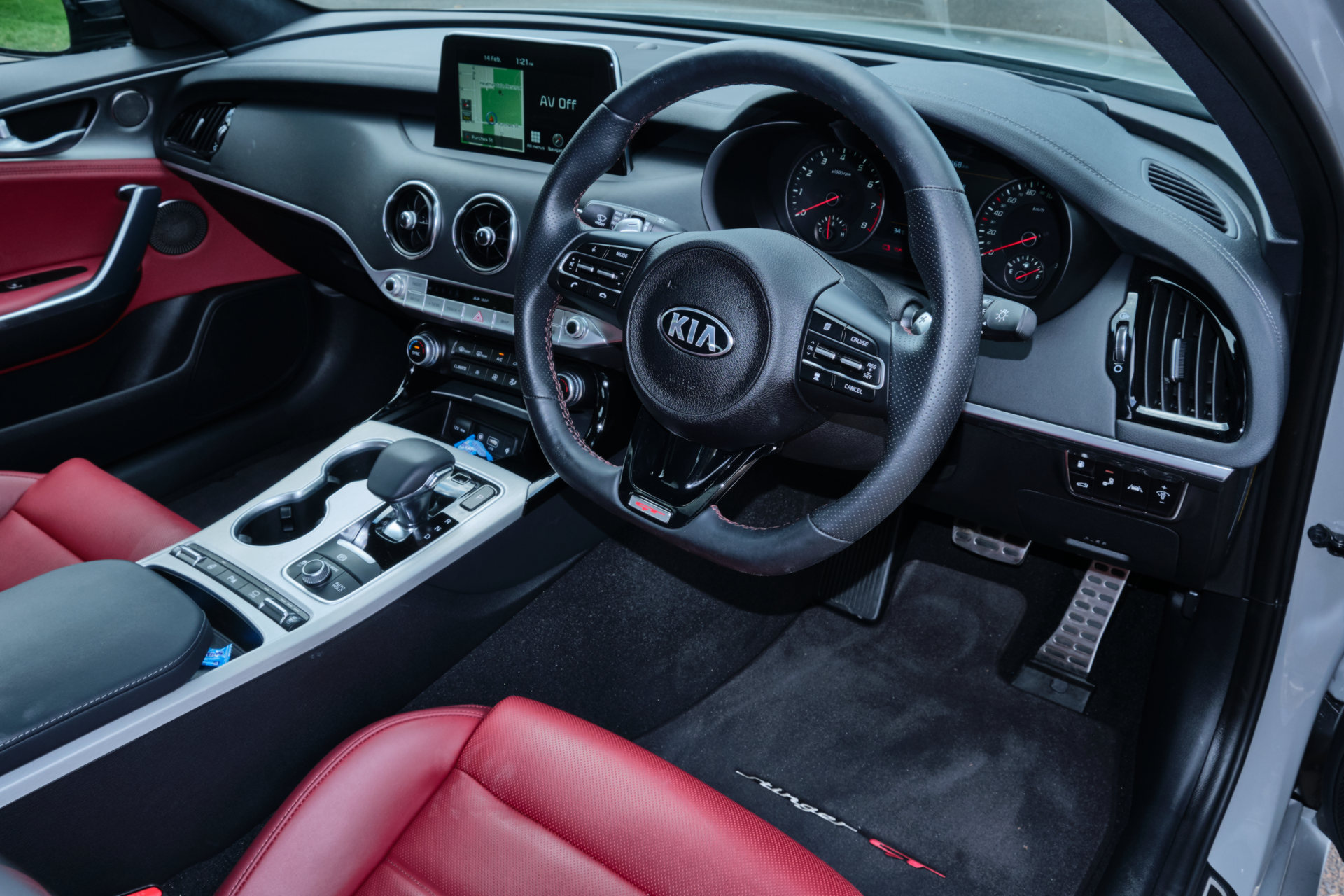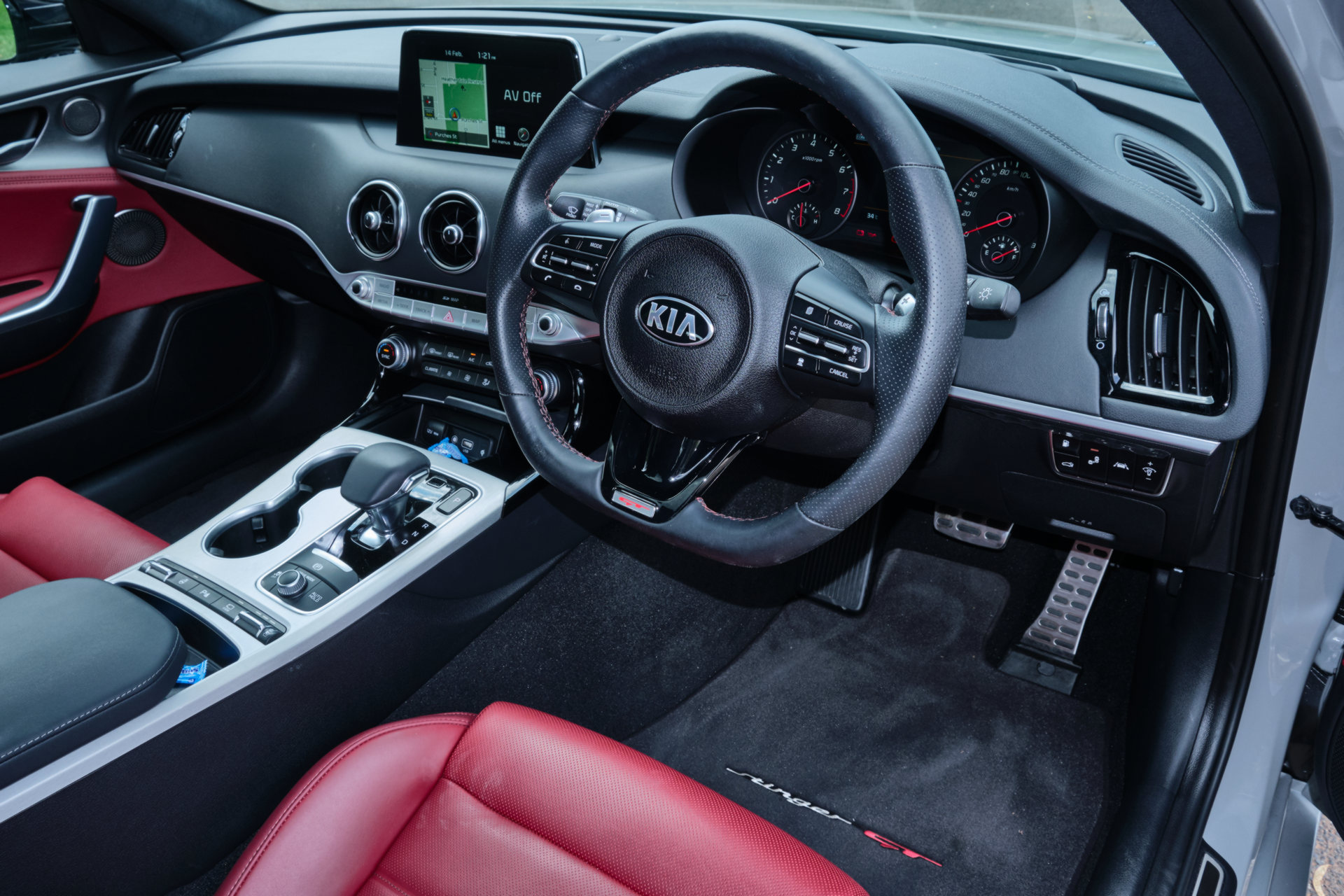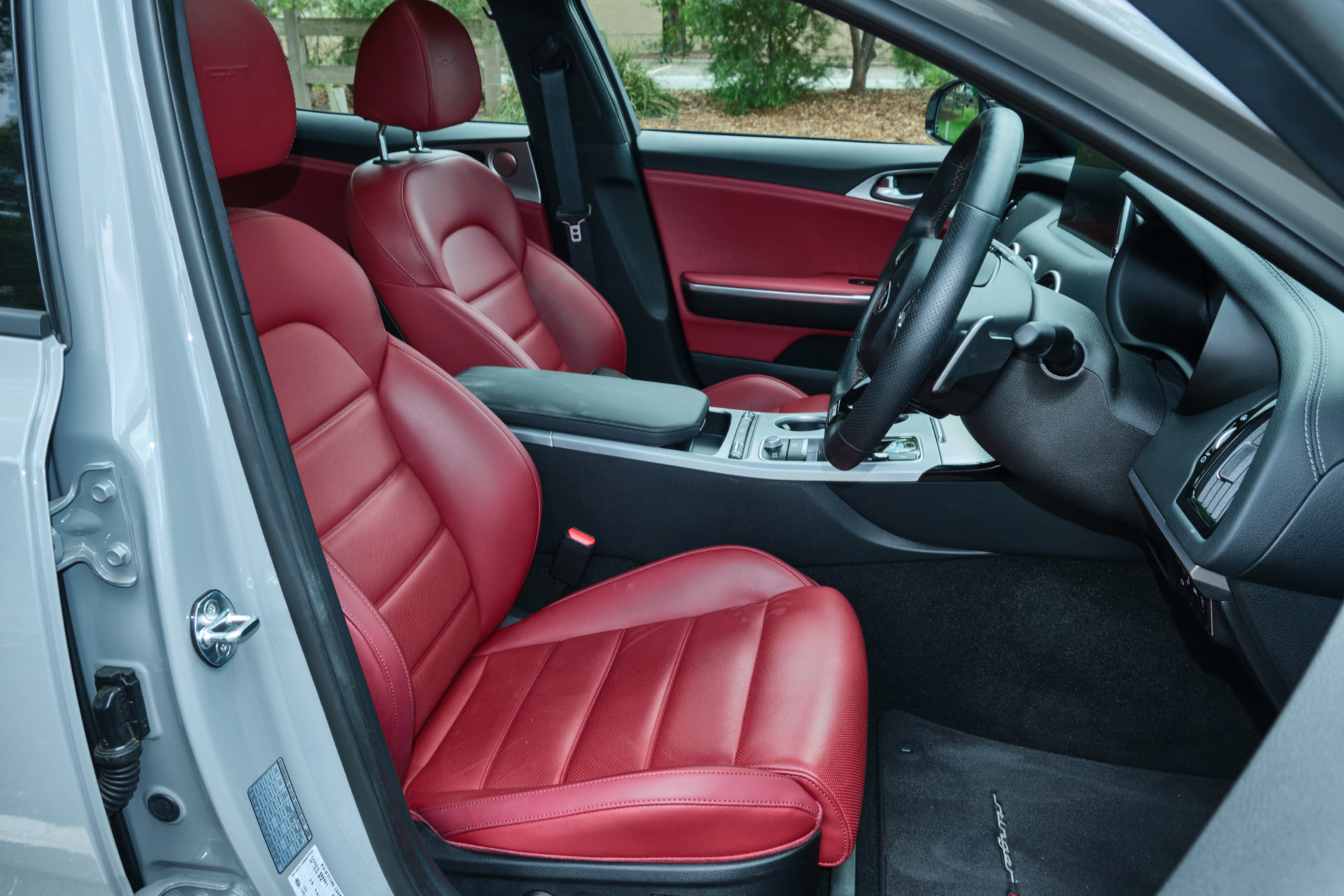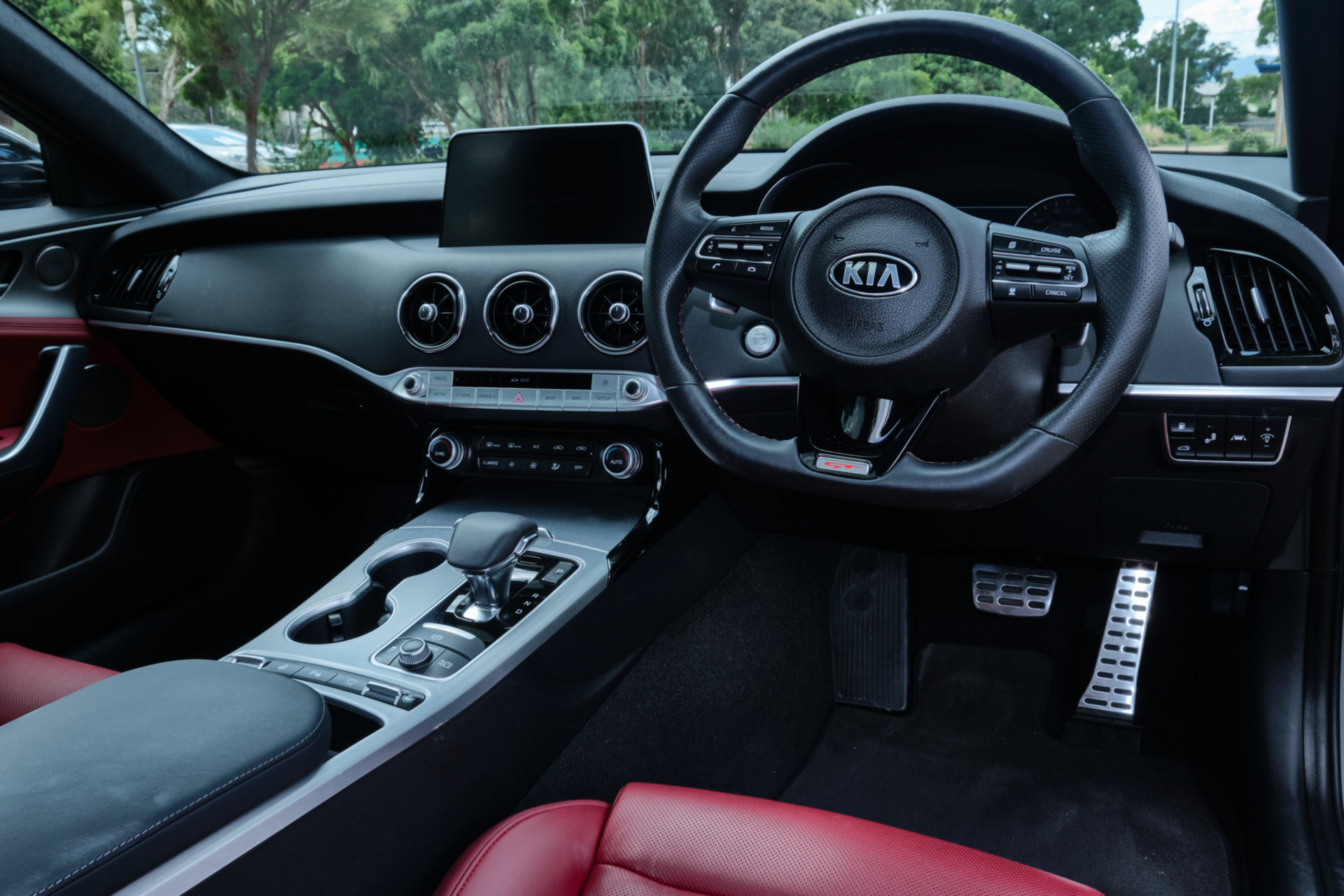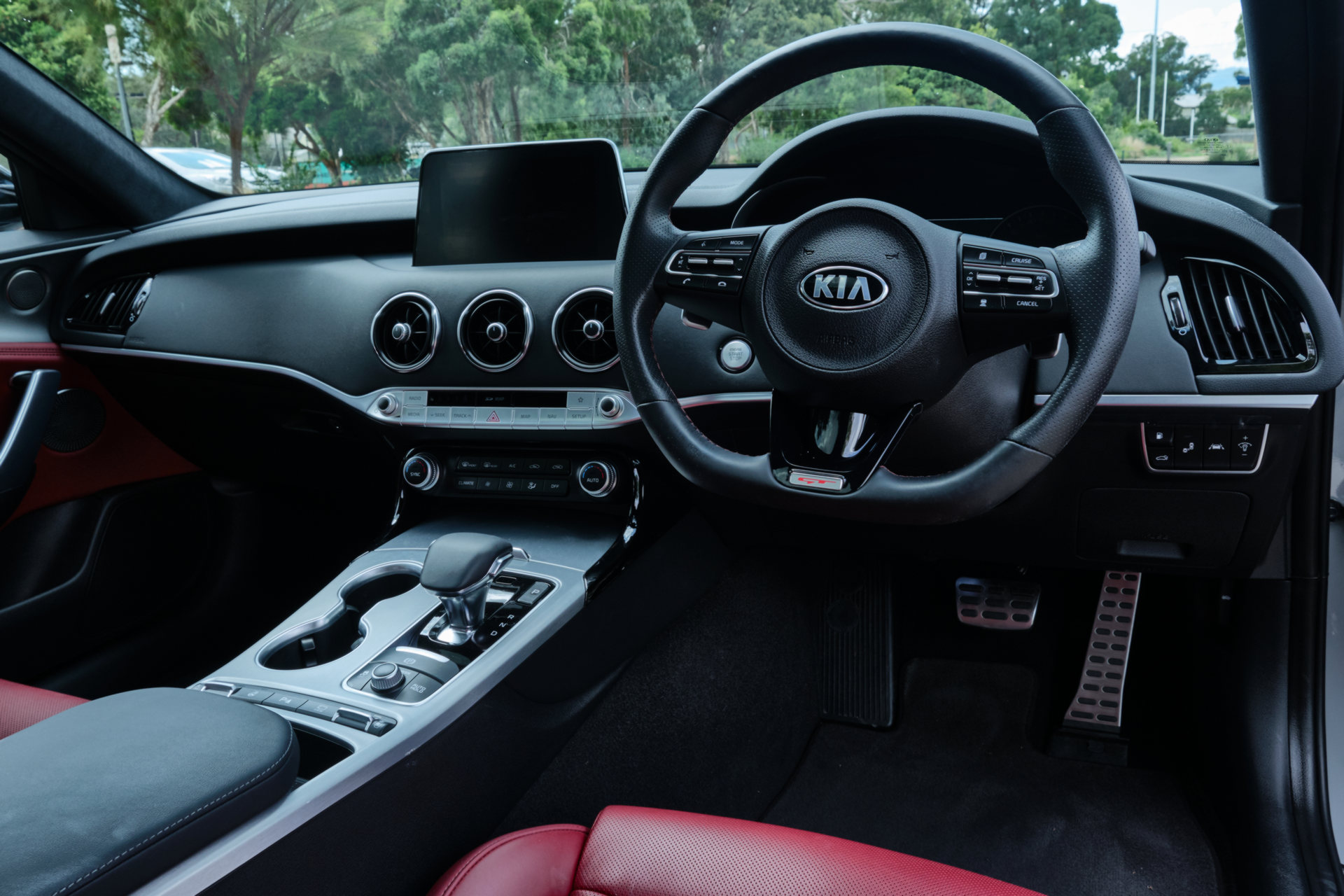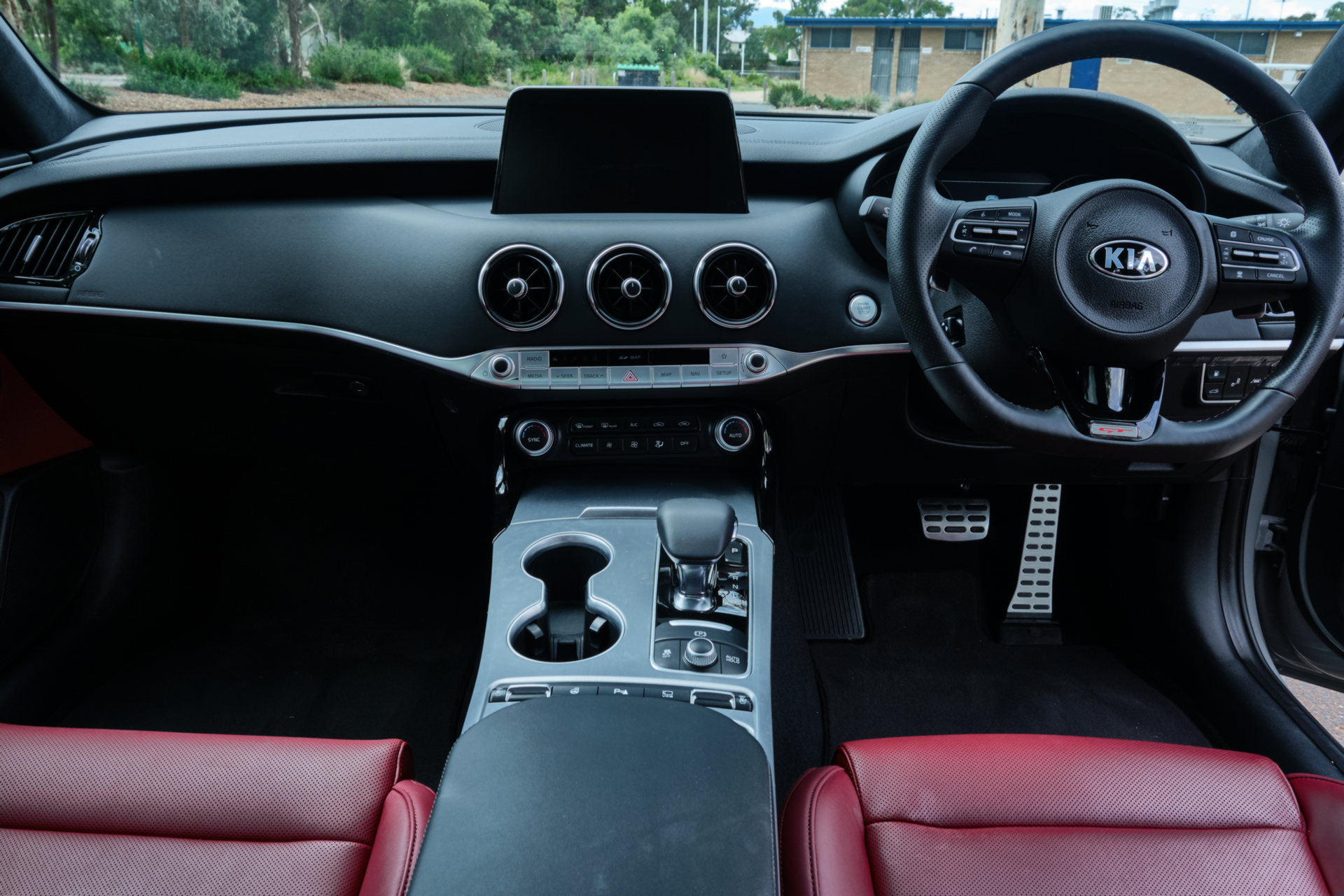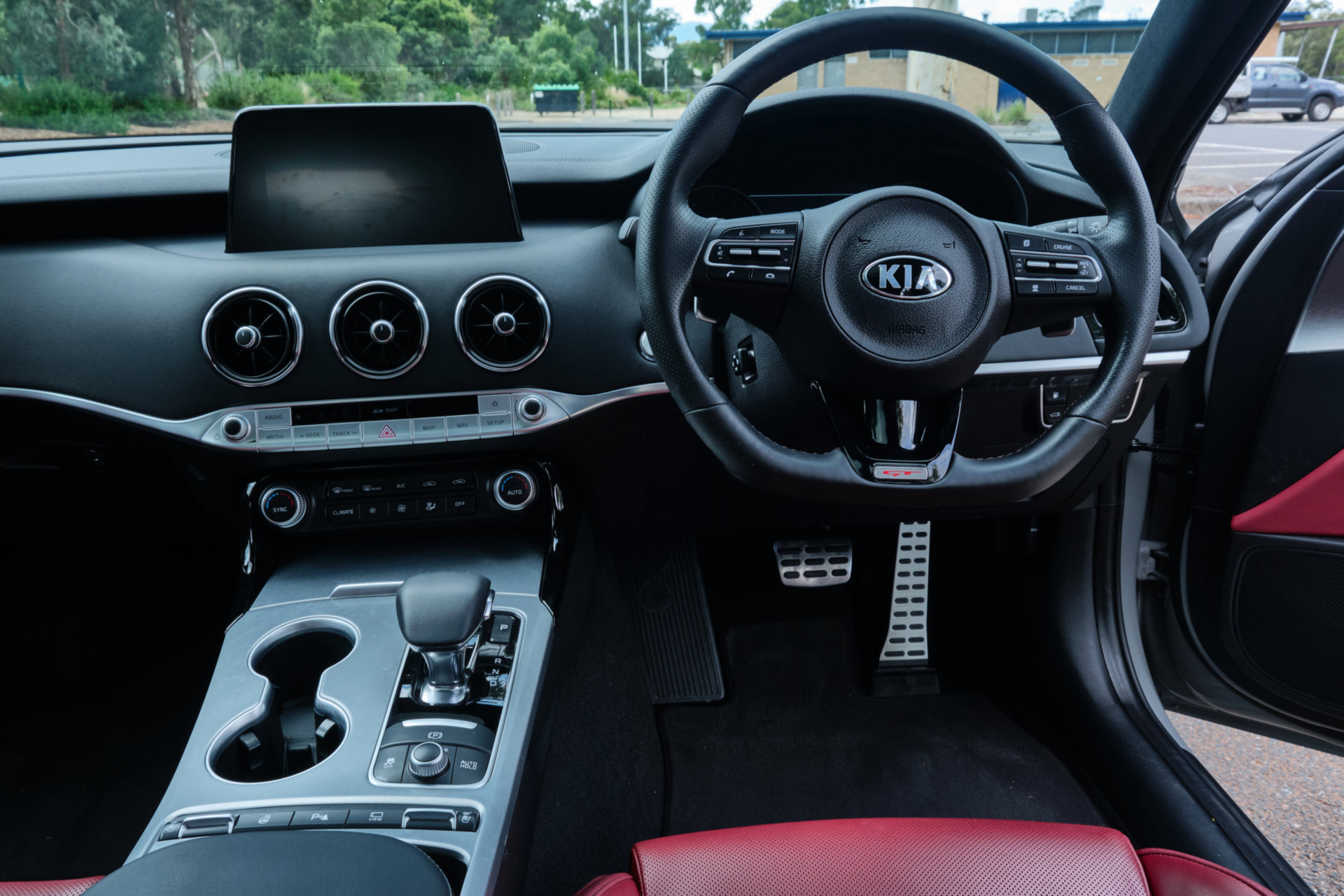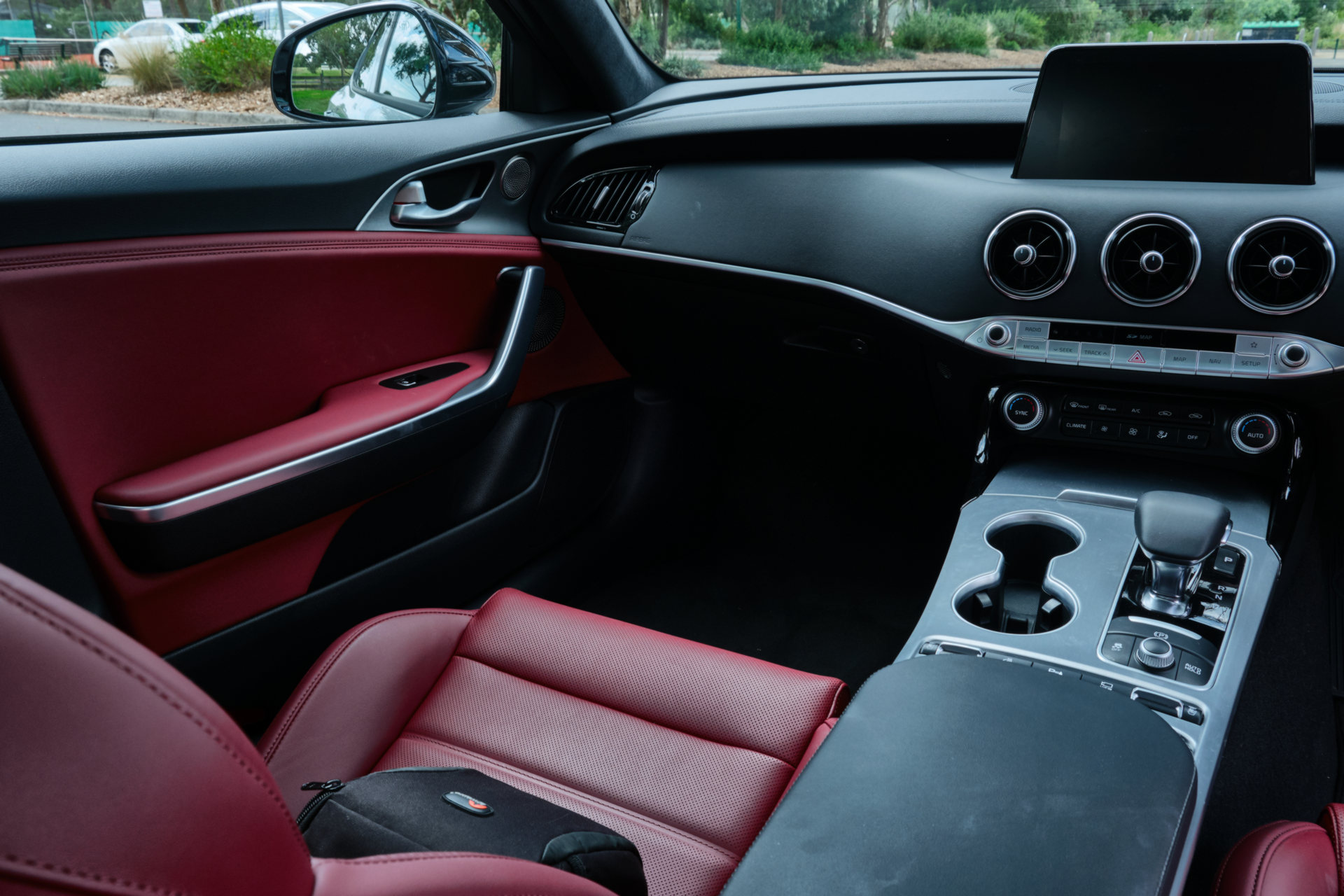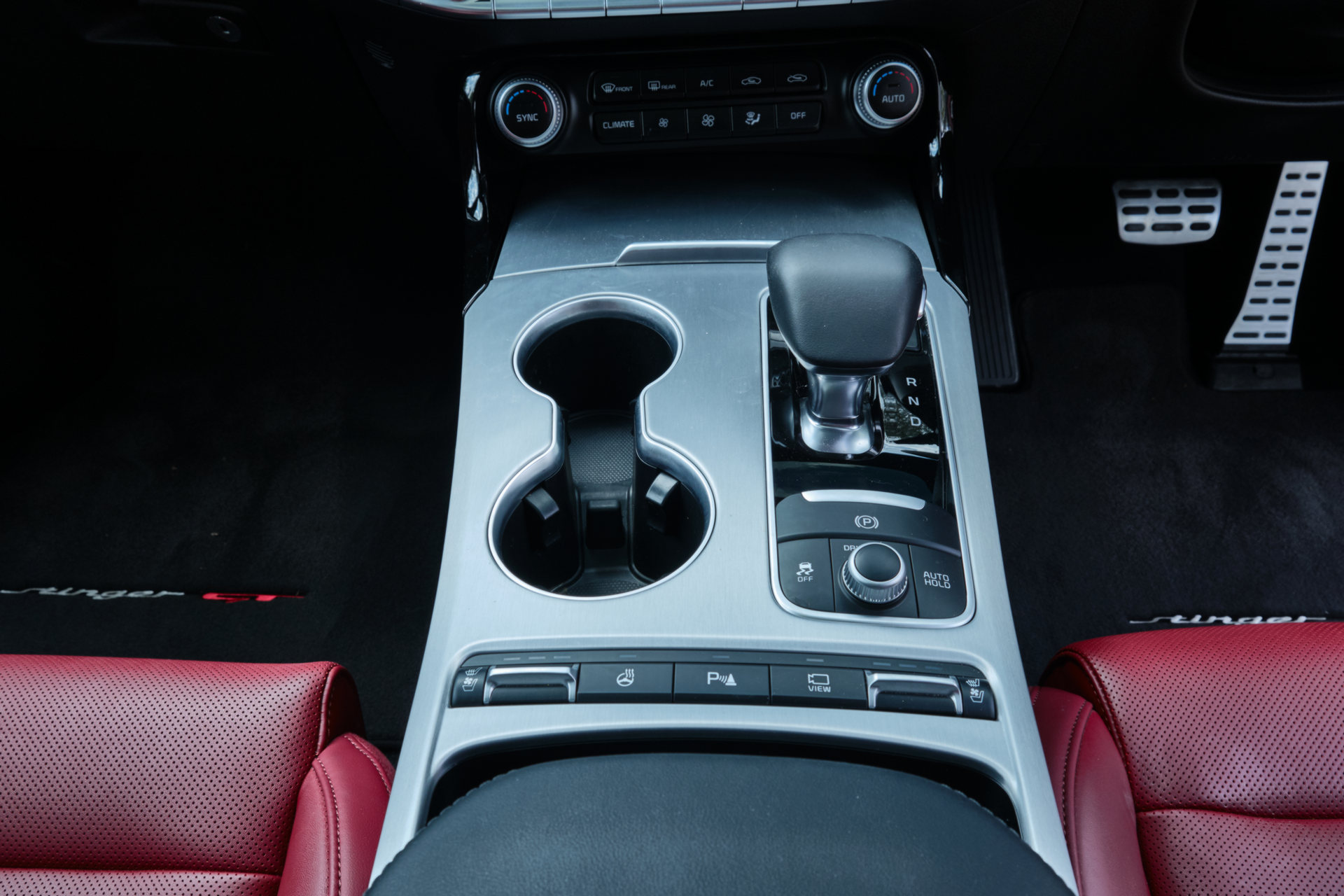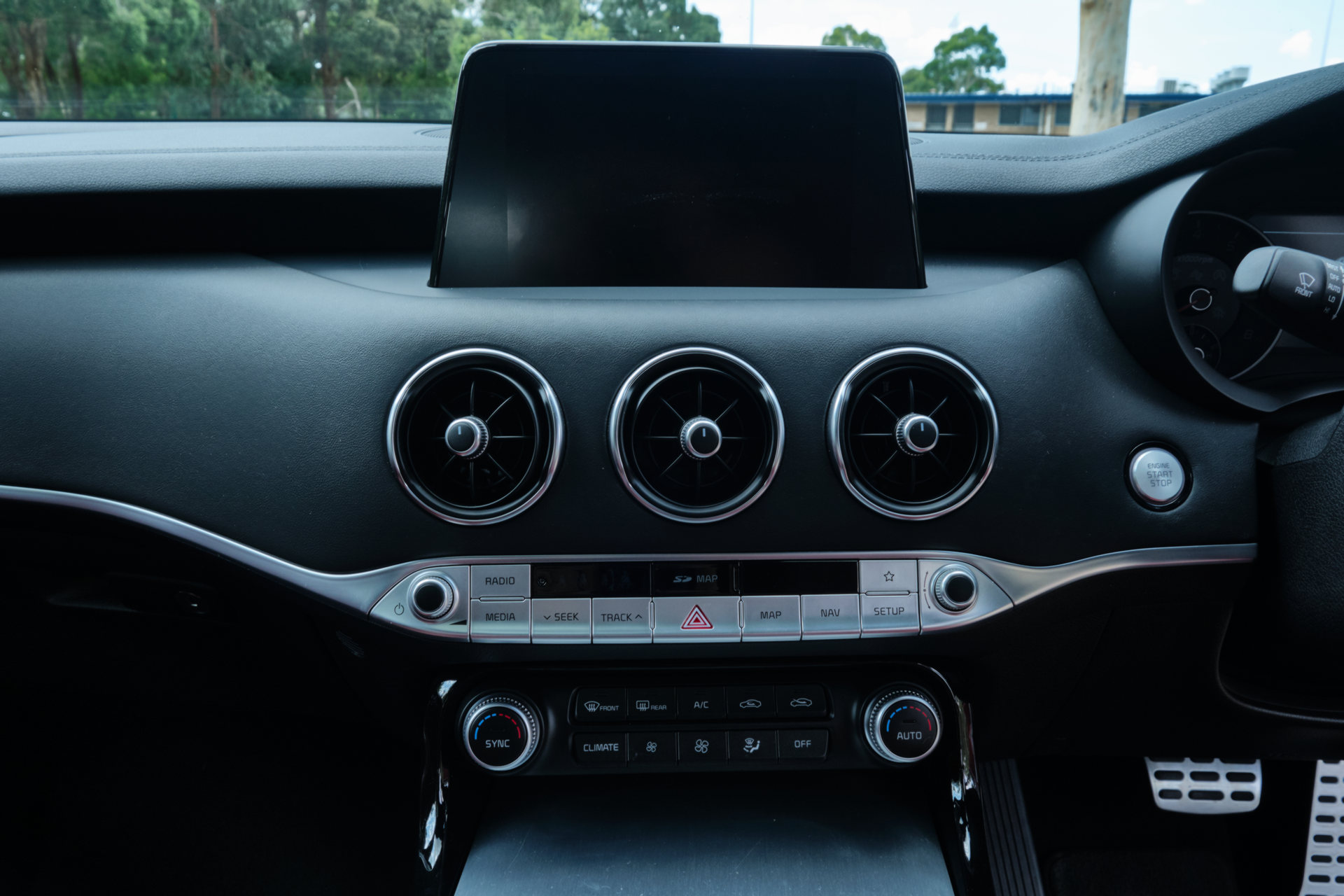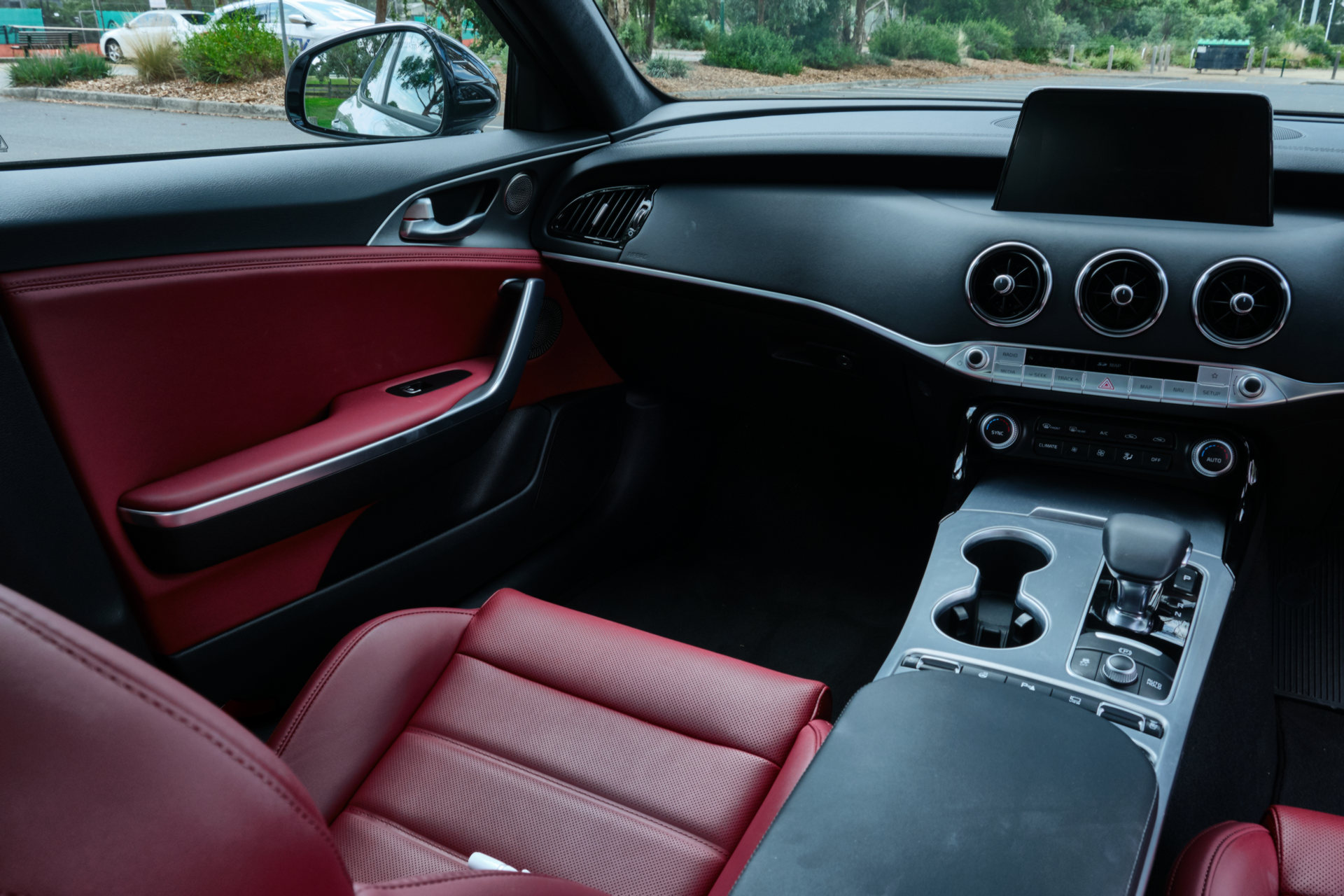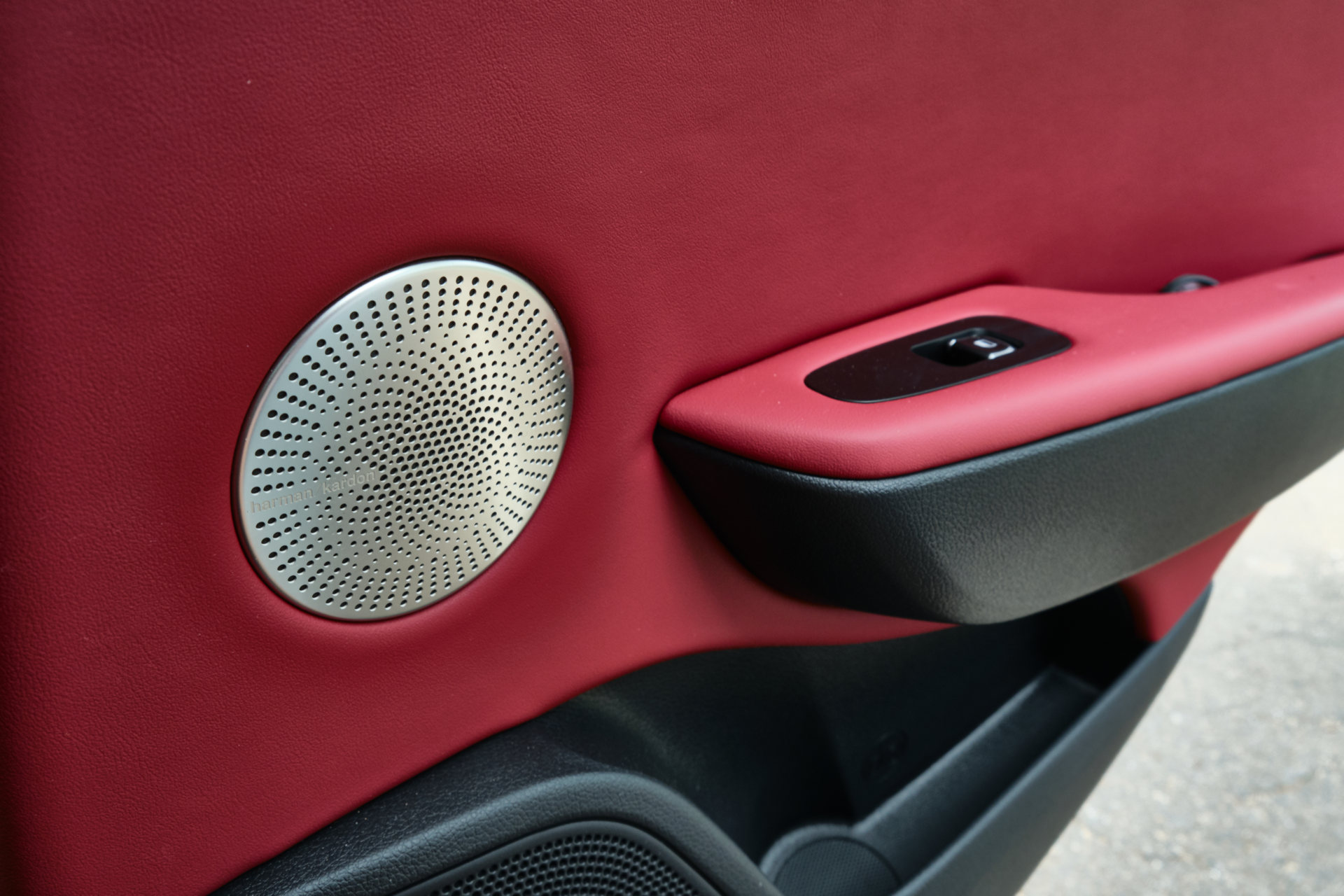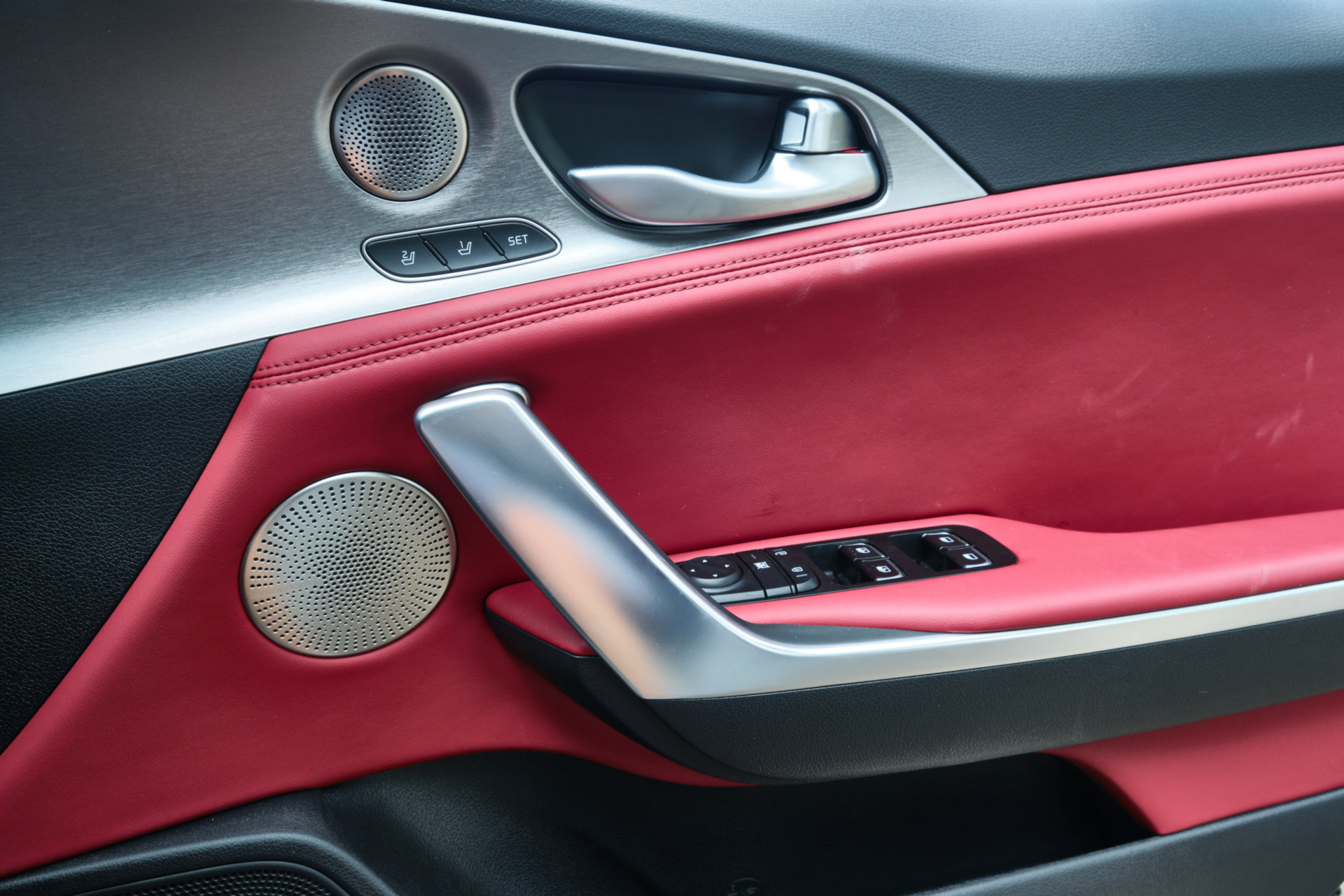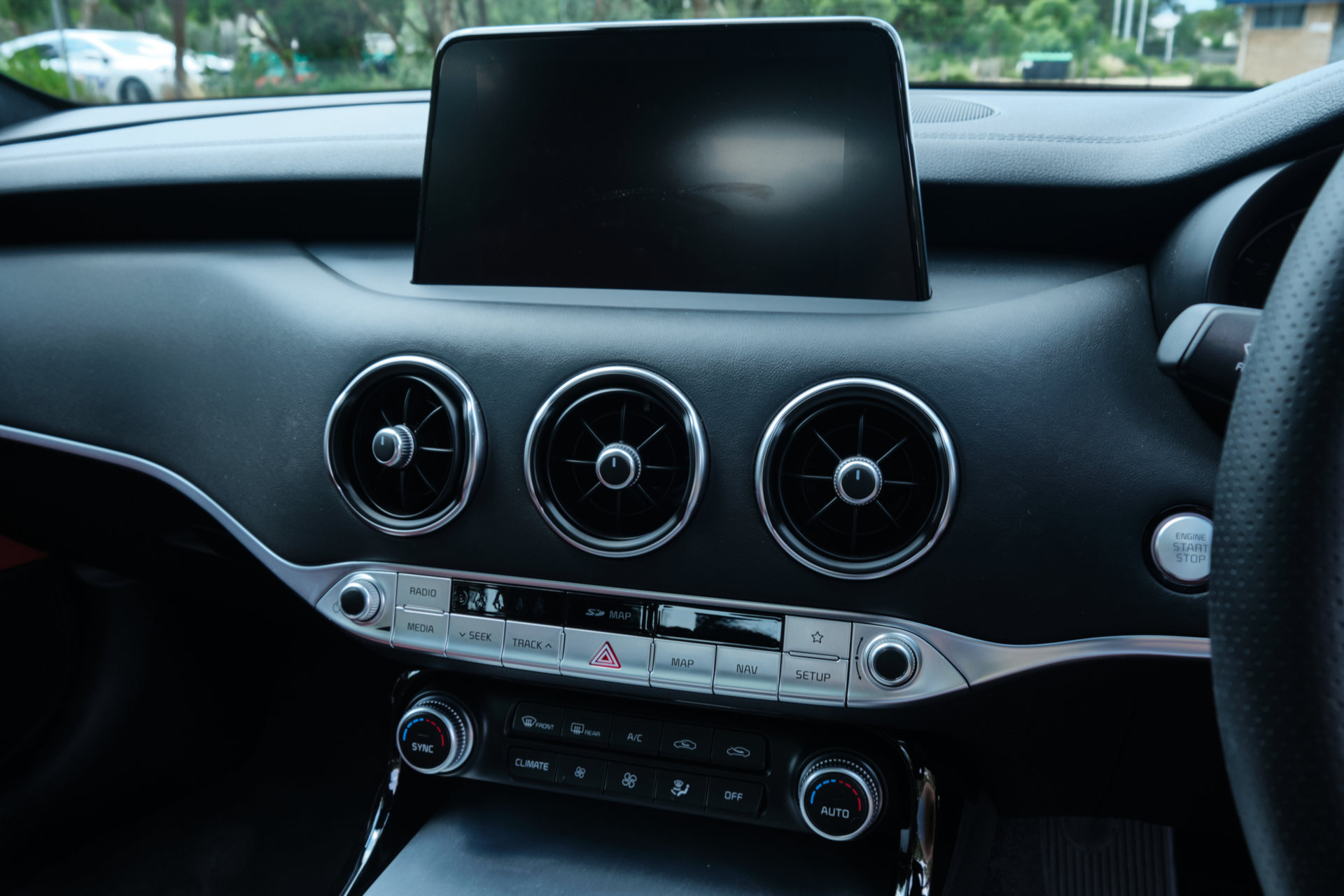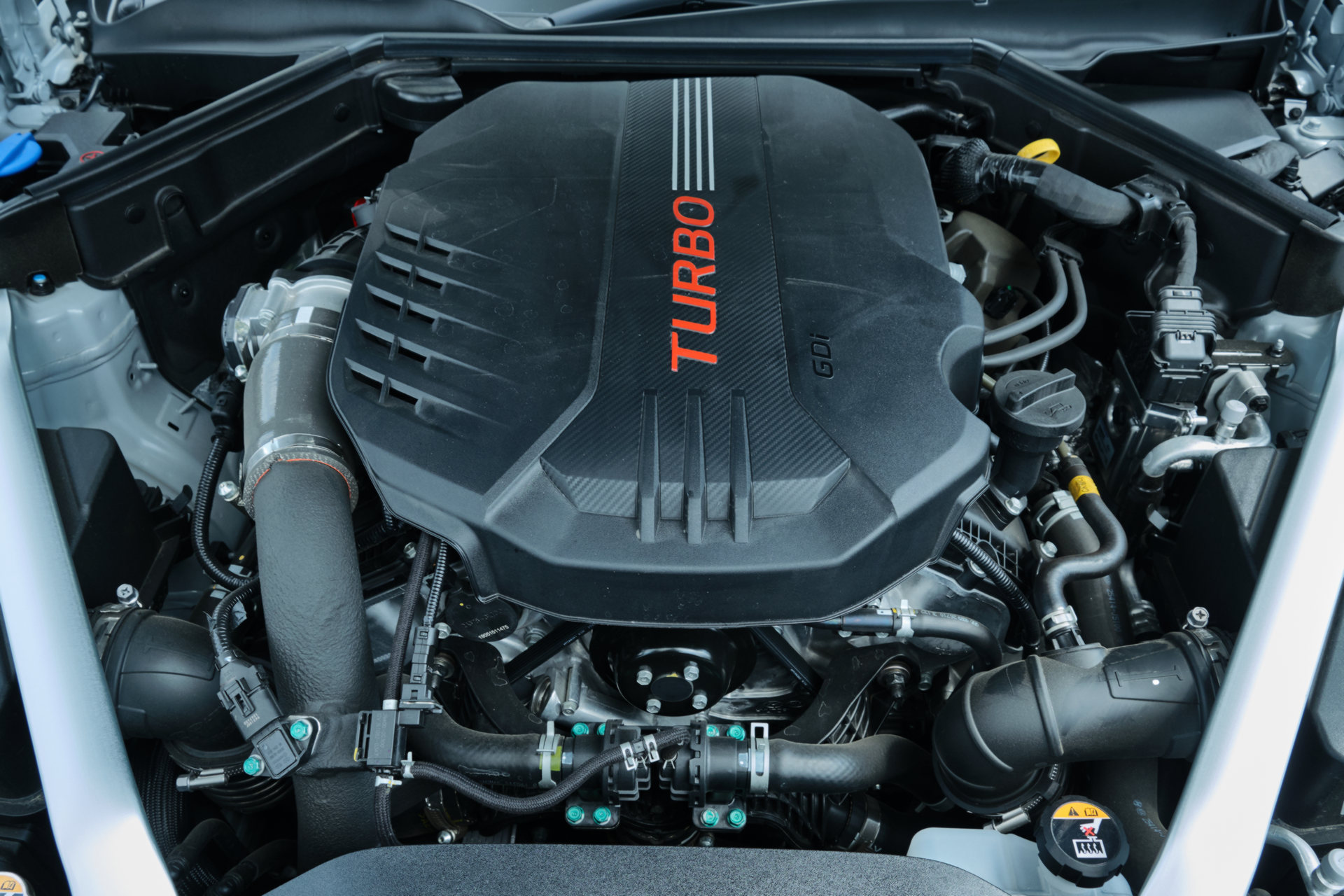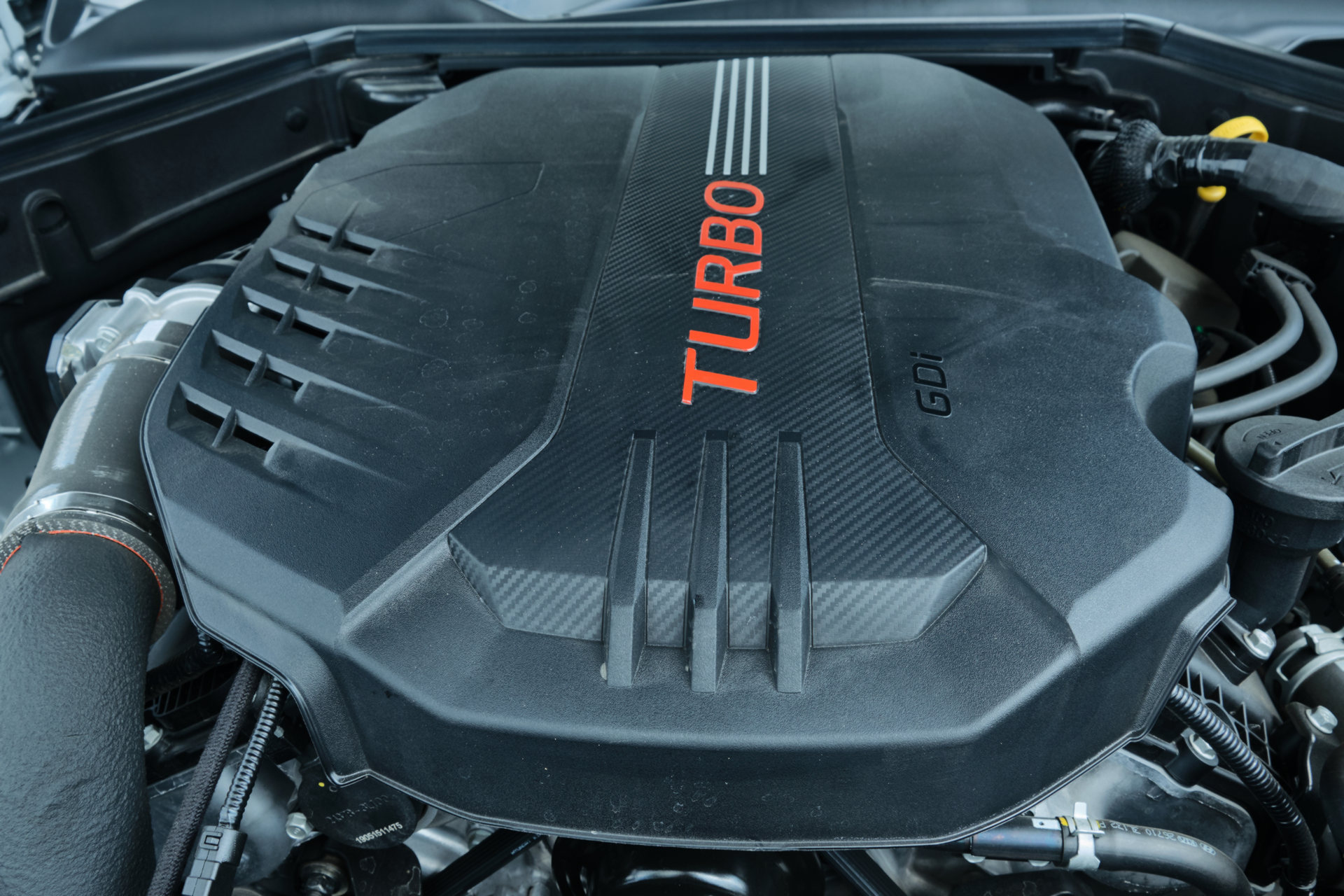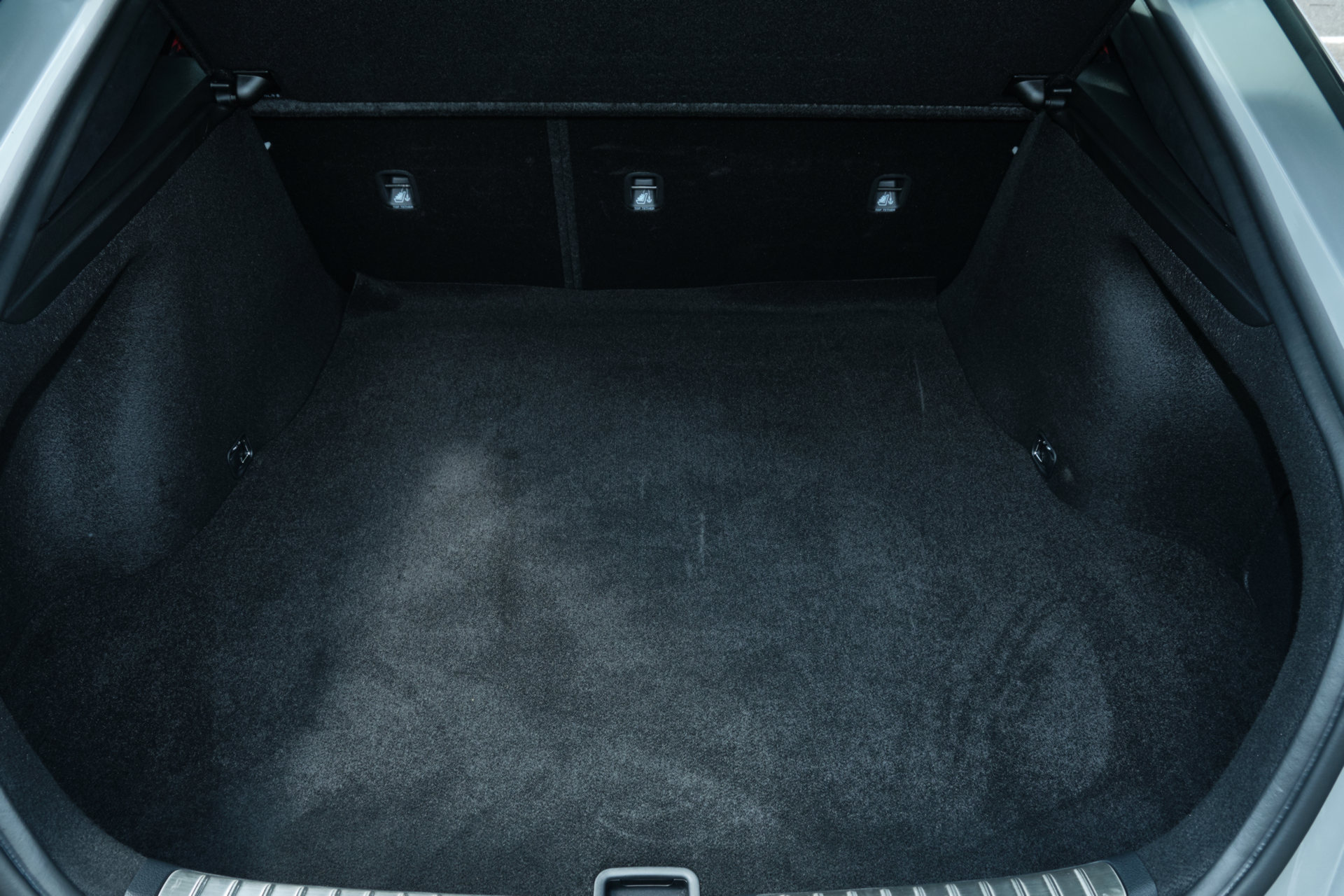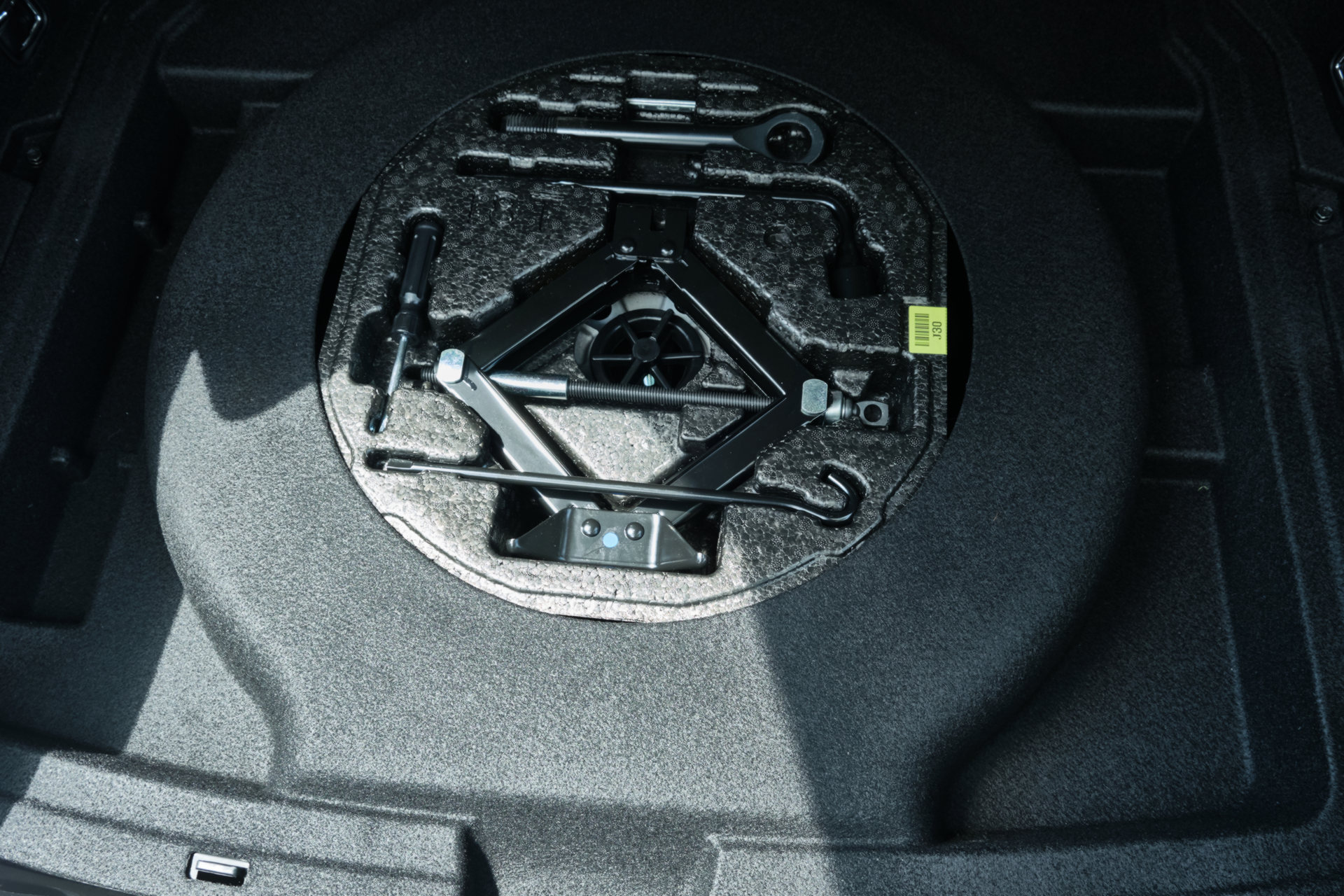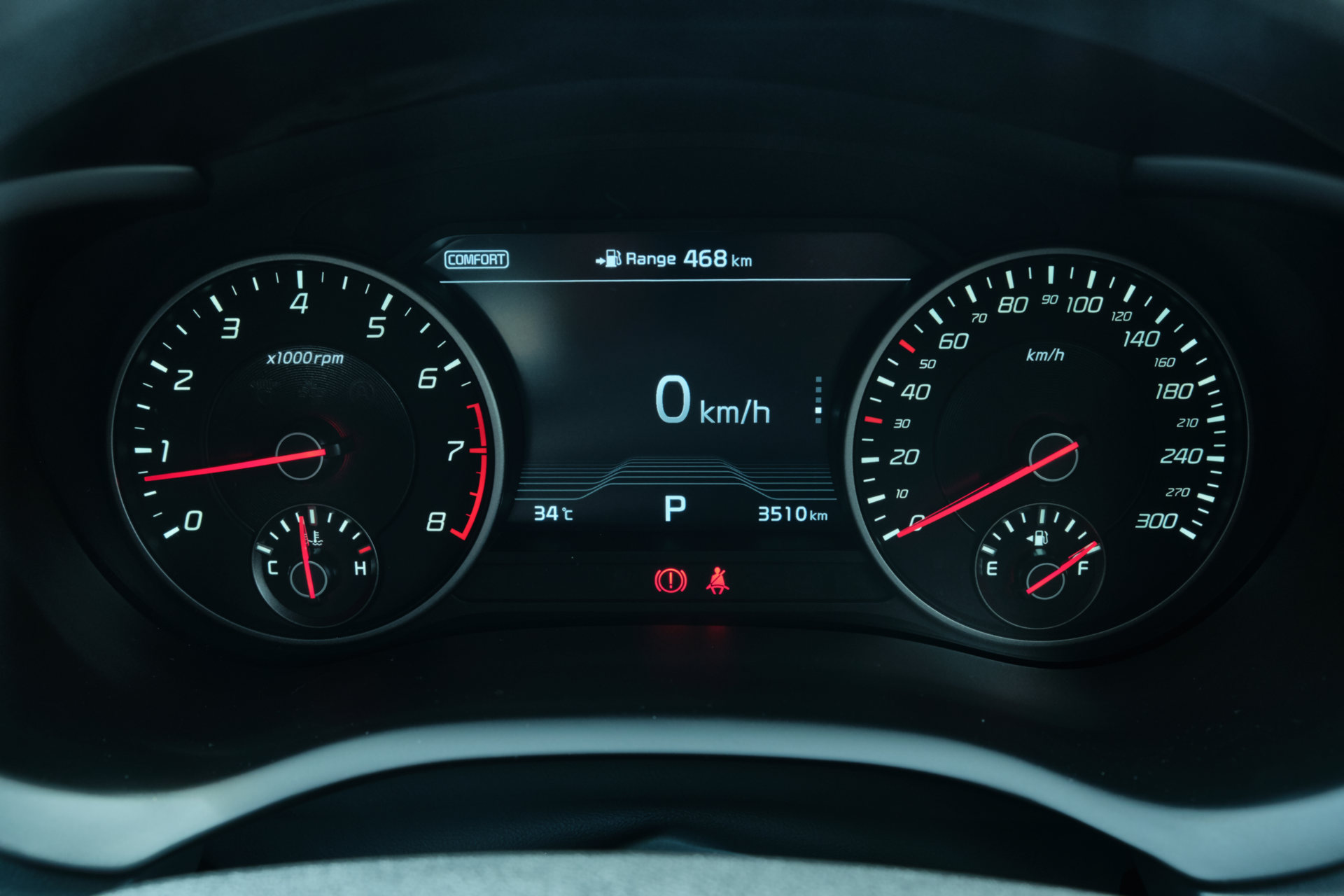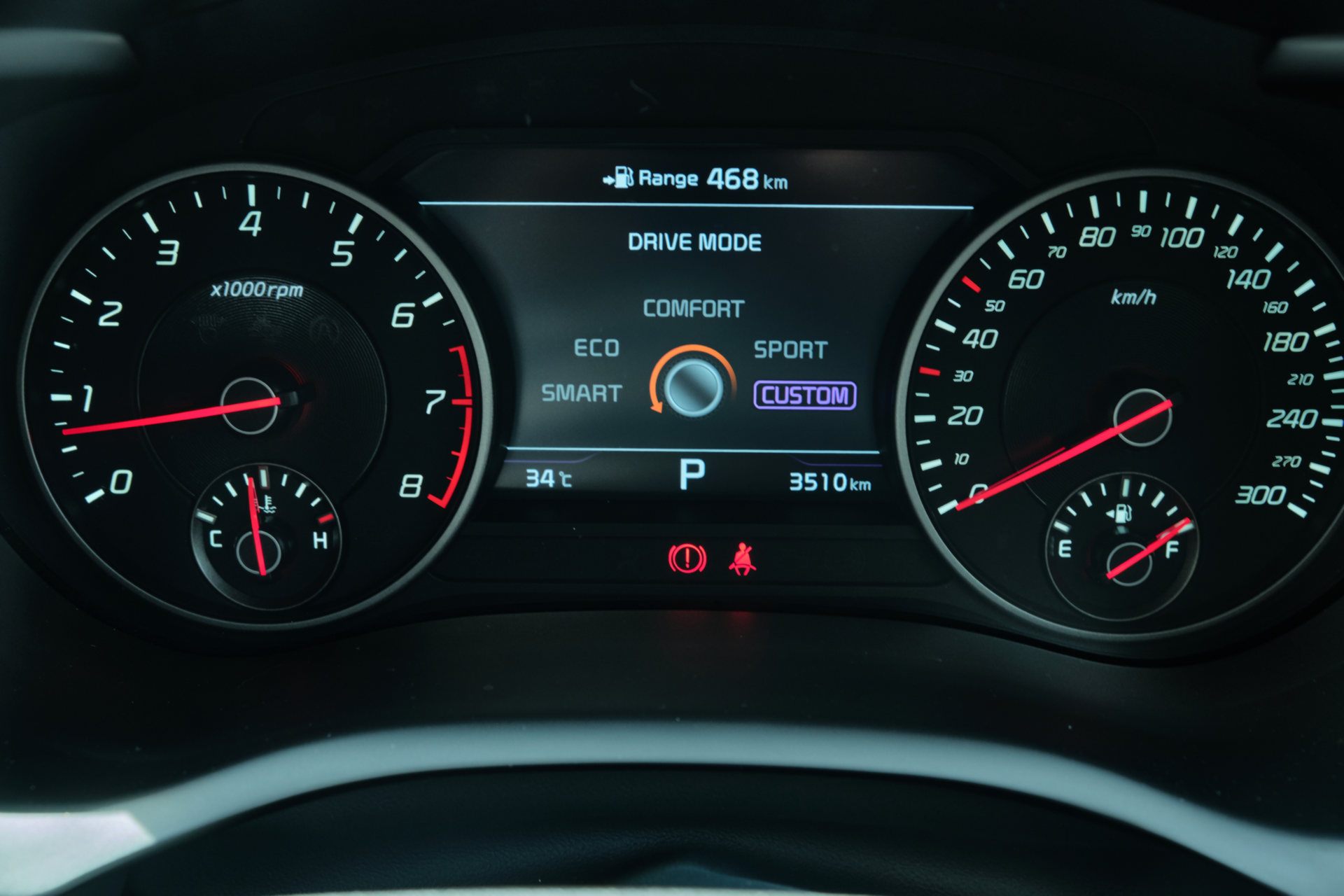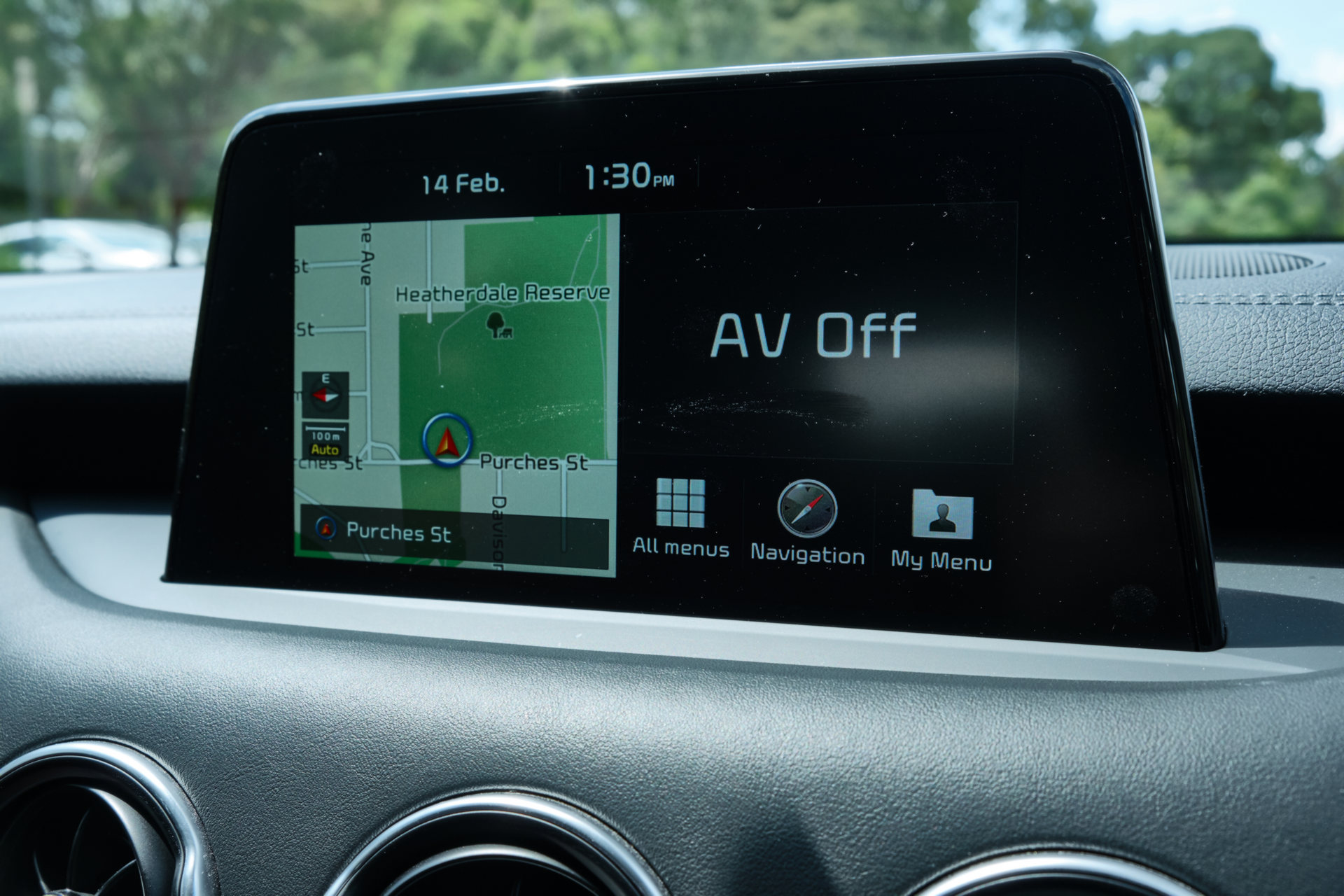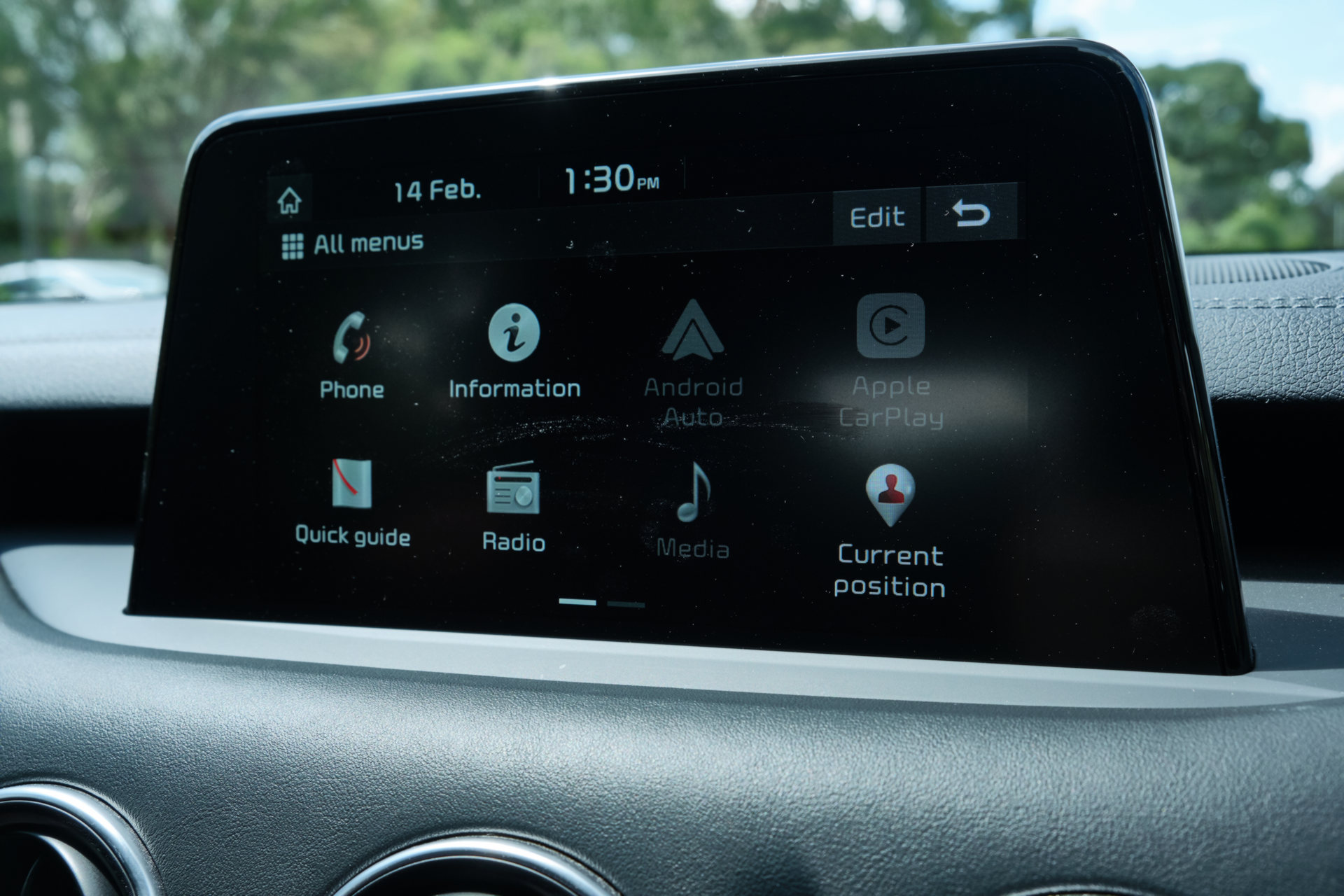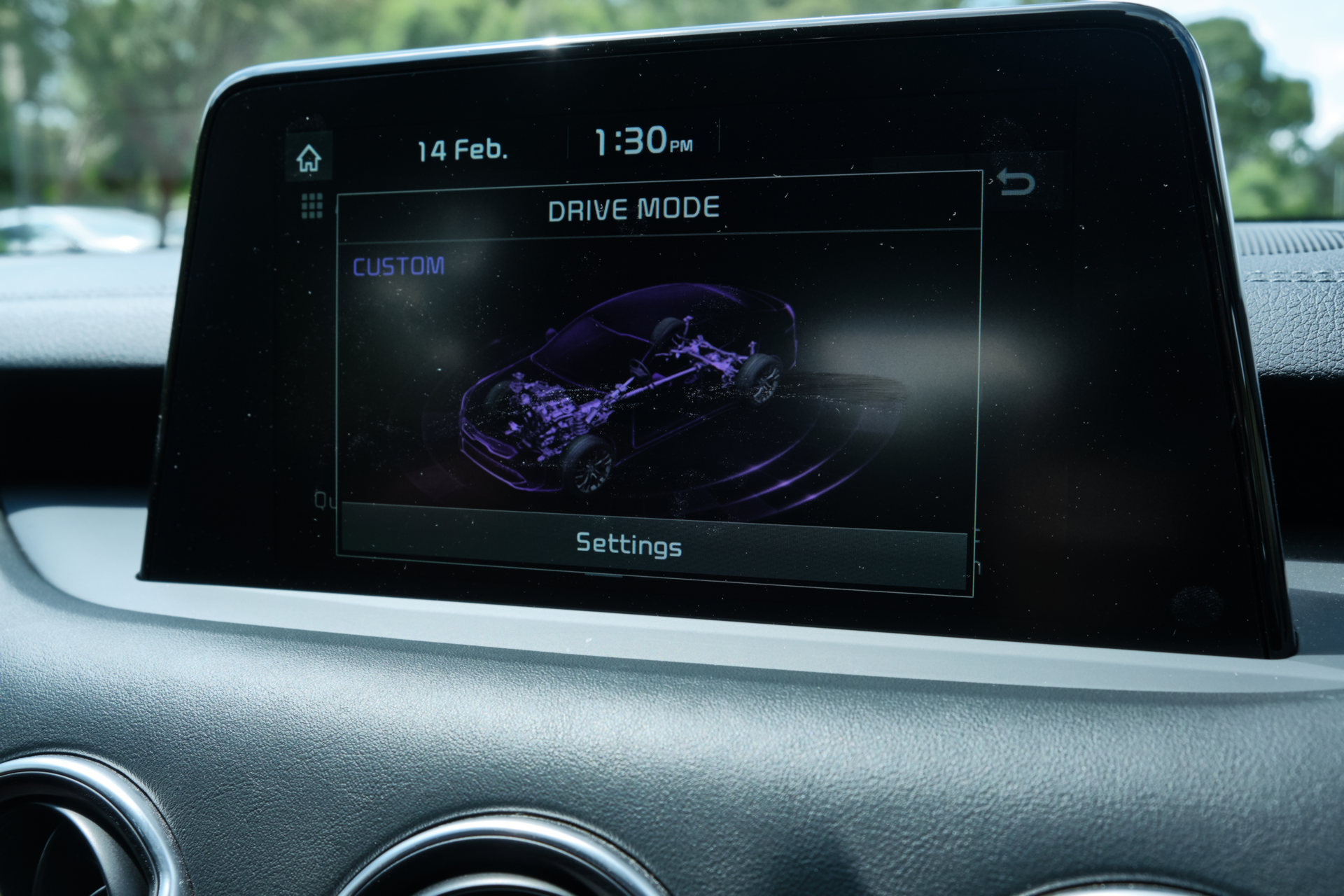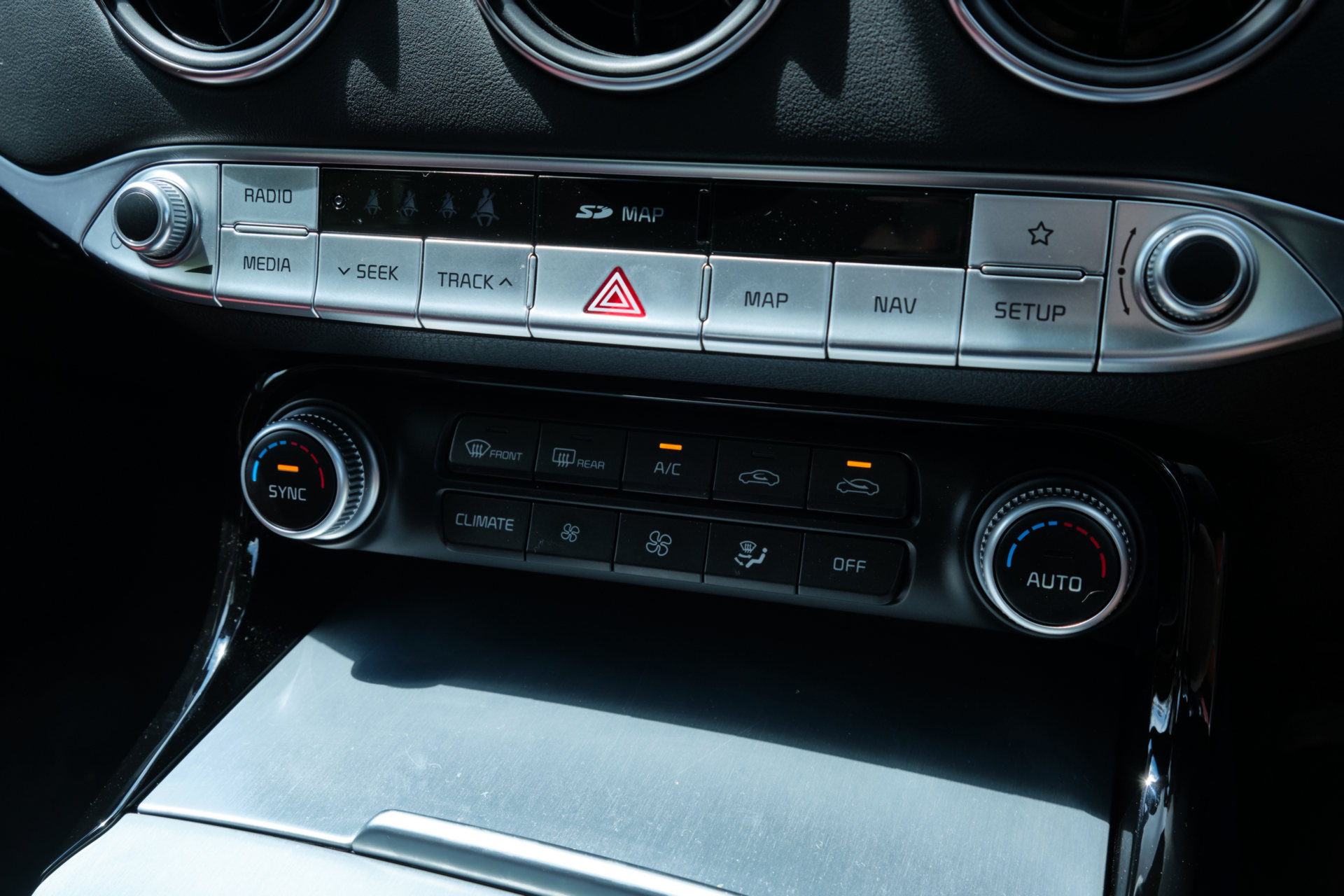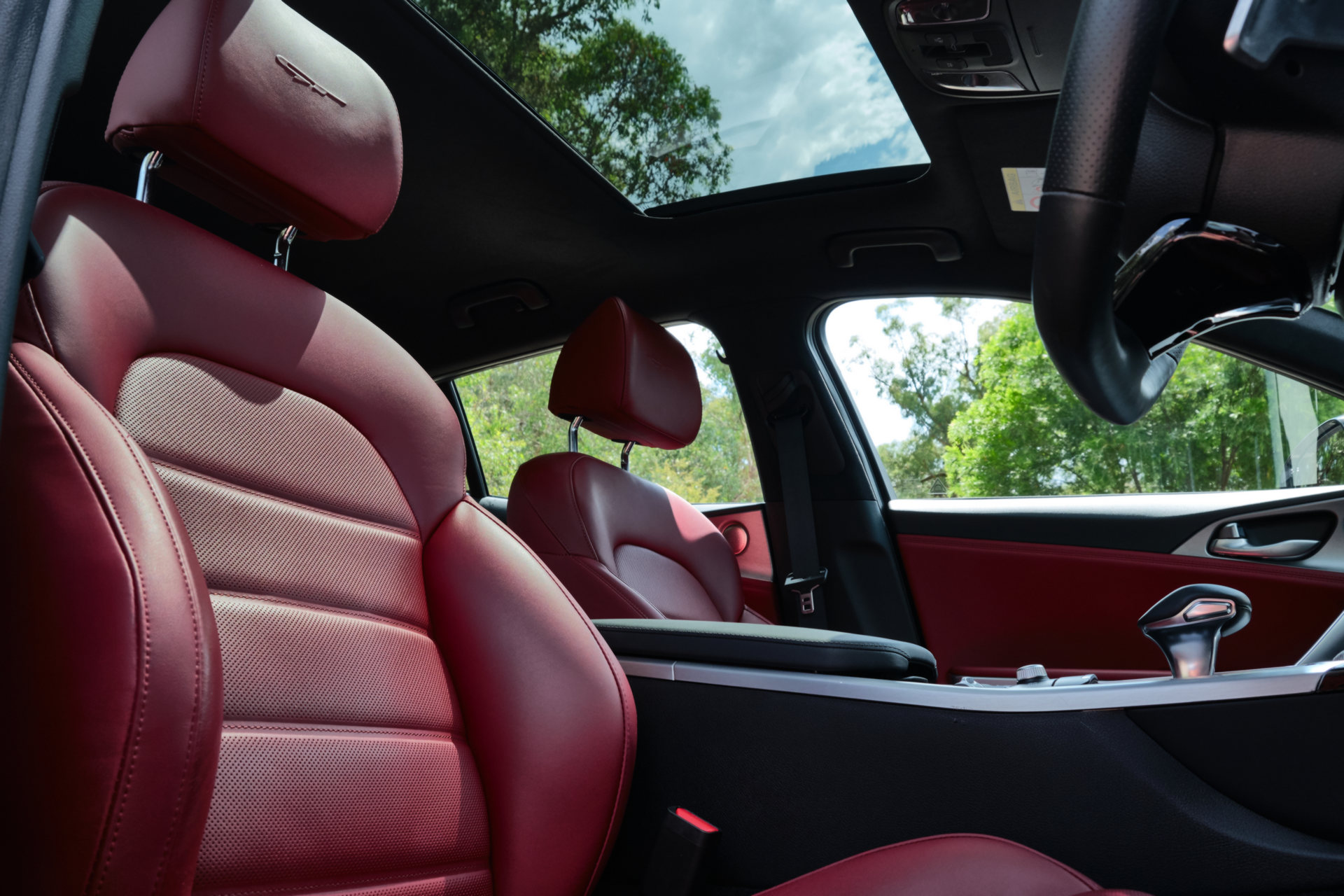Crossovers and SUVs are all the rage nowadays, leaving vehicles like the Kia Stinger to occupy a niche segment of the market that’s starting to wane and grow old for some consumers. Can sports sedans still have appeal?
For the 2020 model year, Kia has updated the Stinger with a few minor touches and we recently spent a week with the range-topping Stinger GT to see what all the fuss is about and if shoppers should still consider such cars. The short answer is yes, we think they should. Continue reading for a more elaborate explanation.
Is this the Stinger you want?
Automotive media has praised the Kia Stinger from the moment it hit the market and in December, we drove the Stinger GT-Line, equipped with a 2.0-liter turbocharged four-cylinder. Going into that test, I was skeptical of this variant and the engine, particularly as the GT features a 3.3-liter twin-turbo V6. However, I came out surprised with how well-rounded the GT-Line was and left curious if the V6 was really all it’s cracked up to be. Spoiler; it is.
The 3.3-liter twin-turbo V6 is an absolute fire-cracker. It delivers 272 kW (365 hp) and 510 Nm (376 lb-ft) of torque that’s sent to the rear wheels courtesy of an 8-speed automatic torque converter transmission and an electronically controlled limited-slip differential.
Kia says the 2020 Stinger GT can accelerate to 100 km/h (62 mph) in 4.9 seconds, an impressive number indeed. What’s particularly lovely about the Stinger GT in Australia is that it is available from the factory with a locally-developed bi-modal exhaust system that’s an AU$2,660 option. This exhaust transforms the driving experience. More on that later.
The intriguing color adorning our test car was dubbed Ceramic Grey and is a no-cost option.
All the creature comforts you could ever need
The cabin of the Stinger GT is an inviting place to spend time, as is the GT-Line. Our test car’s interior was virtually identical to that of the car we tested just a few months ago. Consequently, it featured gorgeous red Nappa leather seats and soft-touch leather dashboard. Some of the upgrades enjoyed by the 2020 model over previous model year iterations are a heated steering wheel and LED ambient lighting across the dashboard and the doors.
Elsewhere, the sedan also comes outfitted with a superb 15-speaker Harman Kardon sound system and includes supportive seats with heating and cooling functions and for the driver, adjustable bolsters so it can hug you nice and tight should you wish. Kia’s familiar 8.0-inch touchscreen sits atop the dashboard with Apple CarPlay and Android Auto support. There’s also a pretty flat-bottomed steering wheel.
The Stinger GT’s sporty prowess becomes particularly evident when you discover that the front seats can be lowered down to the point where your butt almost feels like it’s on the floor, perfect for taller drivers. Even with the seat in its lowest position, however, headroom is minimal and at 6′1″ I only had about 1 cm of space between my head and the soft roof liner.
This theme (sadly) continues in the second-row that can feel slightly cramped for passengers on the taller side. For most others, however, it is perfectly adequate. Luggage space sits at an unremarkable 406 liters (14.3 cubic feet) with the rear seats in place and a more respectable 1,114 liters (39.3 cubic feet) with seats folded down.
Ticks all the right boxes
On the open road, it’s hard not to fall head over heels for the Stinger GT. Like many other models from Kia and sister company Hyundai, drivers are offered a number of different driving modes, including Sport and Custom. I always drove in Custom with the drivetrain in its sportiest setting and the steering and suspension set to Comfort. Adaptive dampers offer two levels of ride quality and in Sport, everything tightens up and becomes quite stiff. I found it a little much but it did prove brilliant along perfectly smooth ribbons of tarmac.
Then we come to the engine. Headline figures of 272 kW (365 hp) and 510 Nm (376 lb-ft) read very well on paper but it’s not until you’re out on the open road that you can really appreciate that for a vehicle like this, this very well may be the perfect amount of pulling power.
Put the car into Sport or Custom modes, turn off the traction and stability control systems, slam down on the brake pedal, hit the throttle and you can enable launch control. The system holds the revs at just over 2,000 rpm and eliminates all wheelspin, even in slightly damp conditions. During more relaxed and mature driving, the engine has a great split personality between a cuddly puppy and an animalistic, snarling tiger, all depending on the drive mode and your throttle inputs.
The available bi-modal exhaust plays a big part in the powertrain’s appeal. When the engine is below roughly 2,800 rpm, it’s very quiet but after that mark the valves open up and produce a thunderous tone that vibrates through the cabin. Like the 2.0-liter model, the Stinger GT includes a noise enhancement system that pumps in engine and exhaust noise through the speakers. Fortunately, this system can be completely disabled and that’s how I left it for the duration of my testing. The exhaust is loud enough on its own.
We were also particularly fond of the Brembo brakes that come standard on the Stinger GT and include meaty four-piston calipers up front and two-piston calipers at the rear. The feel through the brake pedal is pretty good and progressive and fade is non-existent.
When driving the 2.0-liter Stinger, I thought the eight-speed automatic transmission did a fine job. However, having spent a week with the 3.3-liter V6 model, it became apparent that the old torque converter isn’t quite up to the task. Make no mistake, it is fine to use during the daily commute but begins to falter when you enjoy the car in a slightly more spirited way. There is an apparent delay between pulling a paddle and the car actually shifting into gear and at times, the transmission has a mind of its own when left in automatic mode.
Perhaps the most frustrating aspect of the gearbox is that there is no dedicated manual mode so if you want to change gears yourself, you have to leave the car in Drive and use the paddles. But, as the transmission is still in Drive, it will intervene and change up a gear if it thinks you’re holding on to one for too long. Kia’s decision not to add a manual mode is odd for this type of car.
Related: Driven – 2020 Kia Stinger 2.0L GT-Line Surprises As A Superb All-Rounder
The Kia Stinger GT is publicized as a superb cruiser and it also performs that duty brilliantly, particularly on long highway jaunts. Set in Comfort mode, everything is smooth, neither the exhaust nor engine are overly intrusive, and it’s easy to find yourself drifting into a state of bliss when behind the wheel. Should you want to get your blood pumping, the Stinger GT is beautifully adept at taking corners, often shaking its tail on corner exit with the traction and stability control systems disabled.
The car’s handling is aided in no small part by the presence of 19-inch wheels that accommodate 225/40 Michelin Pilot Sport 4 tires at the front and 255/35 tires at the rear. These tires perform great on the limit and produce very little drone on the highway.
The Europeans need to watch out
Kia says the 2020 Stinger GT drinks down 10.2 l/100 km (23 mpg) over the combined cycle. I achieved a frankly hilarious 16.6 l/100 km (14.1 mpg) as I primarily drove in traffic and went for a few blasts along nearby mountain roads. During a 45 km (28 mile) stint on the highway and roughly 5 km (3 miles) of urban driving, consumption sat at 12.5 l/100km (18.8 mpg).
The price of the Kia Stinger GT is hugely appealing with our tester carrying a drive away price of AU$63,990 (US$42,191). To put that into perspective, the GT-Line we tested was priced at AU$60,185 (US$39,682) and that came with a 2.0-liter engine.
Both the Kia Stinger GT and the GT-Line are excellent cars. If the price discrepancy between the 3.3-liter V6 and 2.0-liter models was $10,000, we’d recommend the 2.0-liter. However, as the two are so similarly priced, the 3.3-liter Stinger GT gets our pick.







